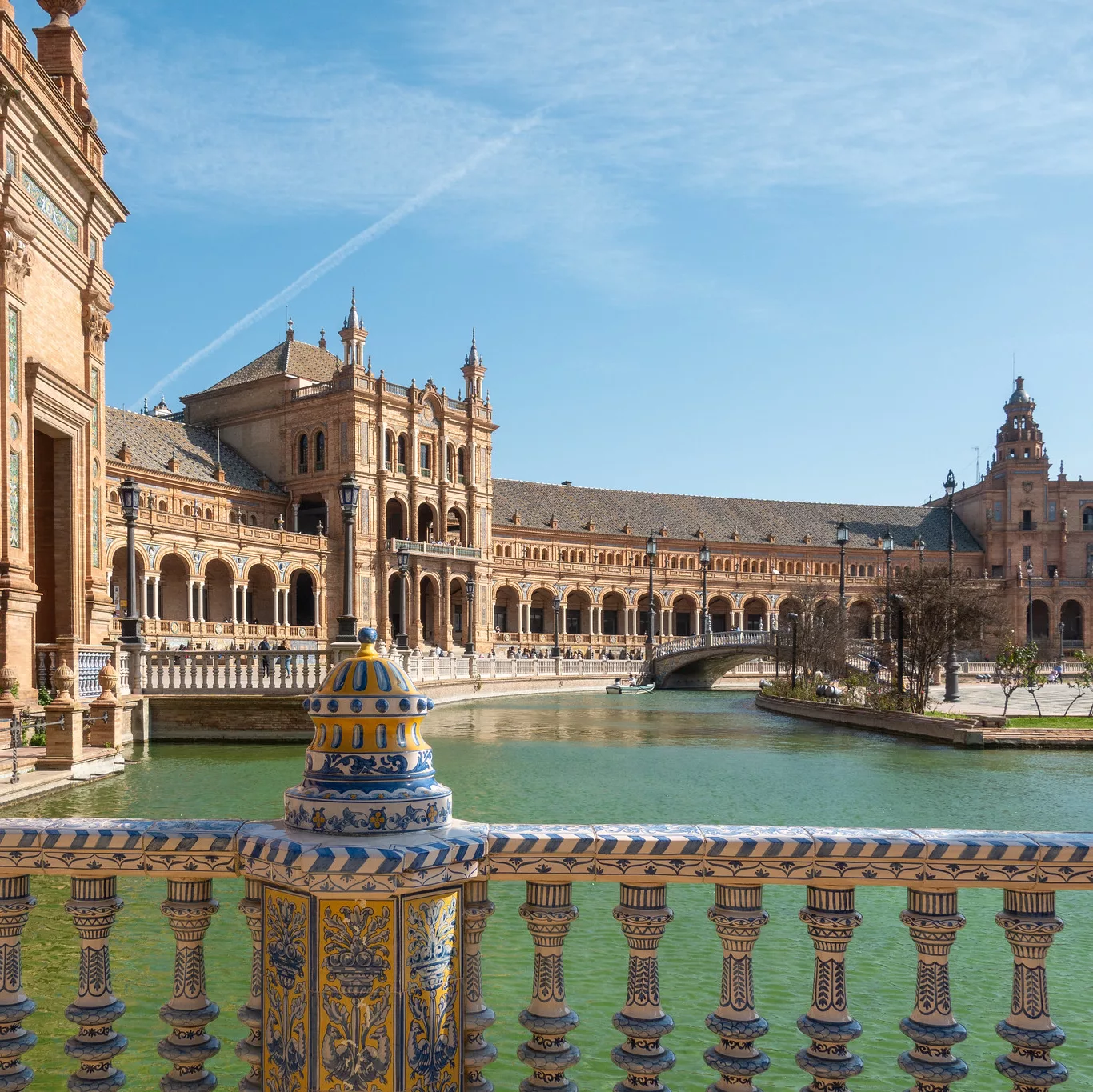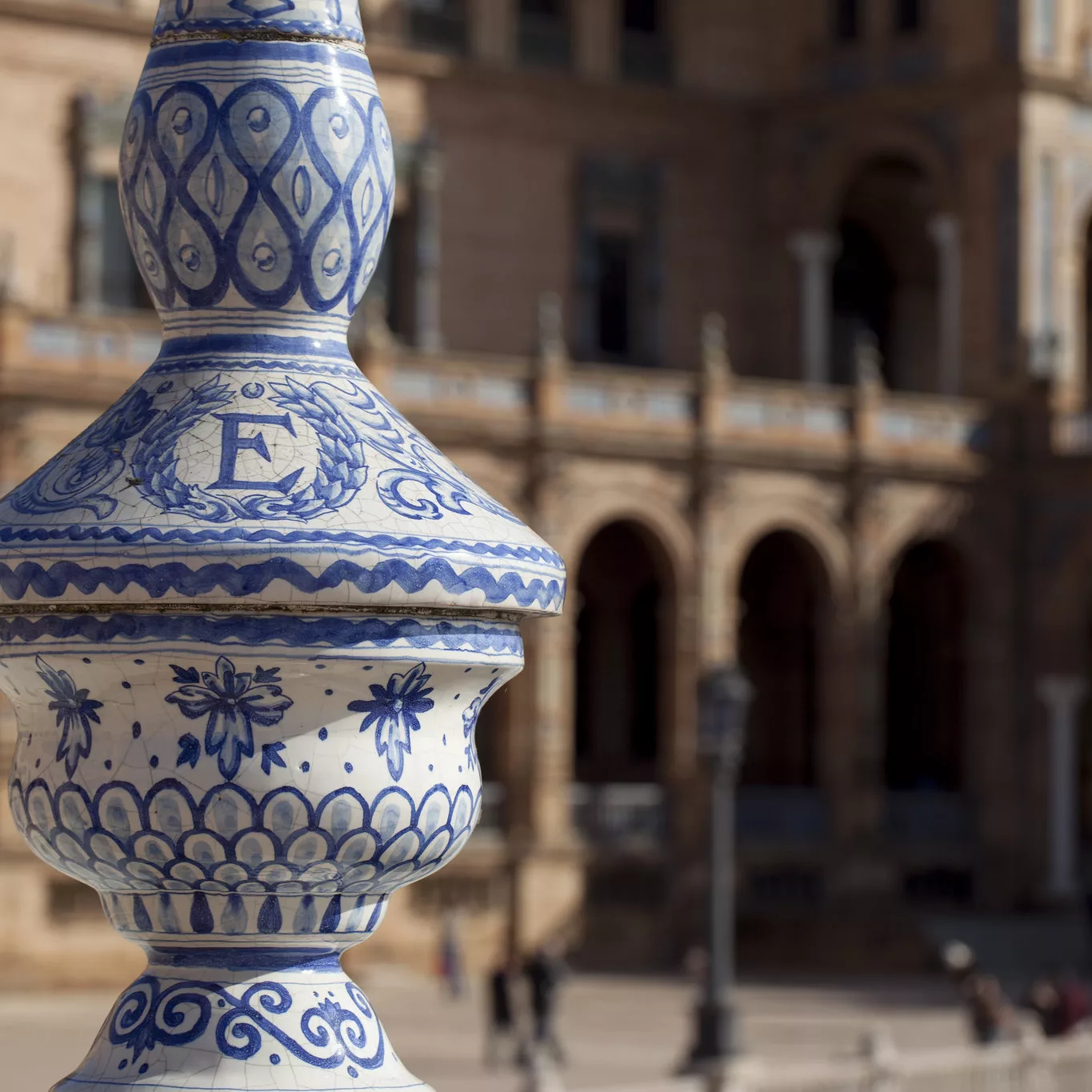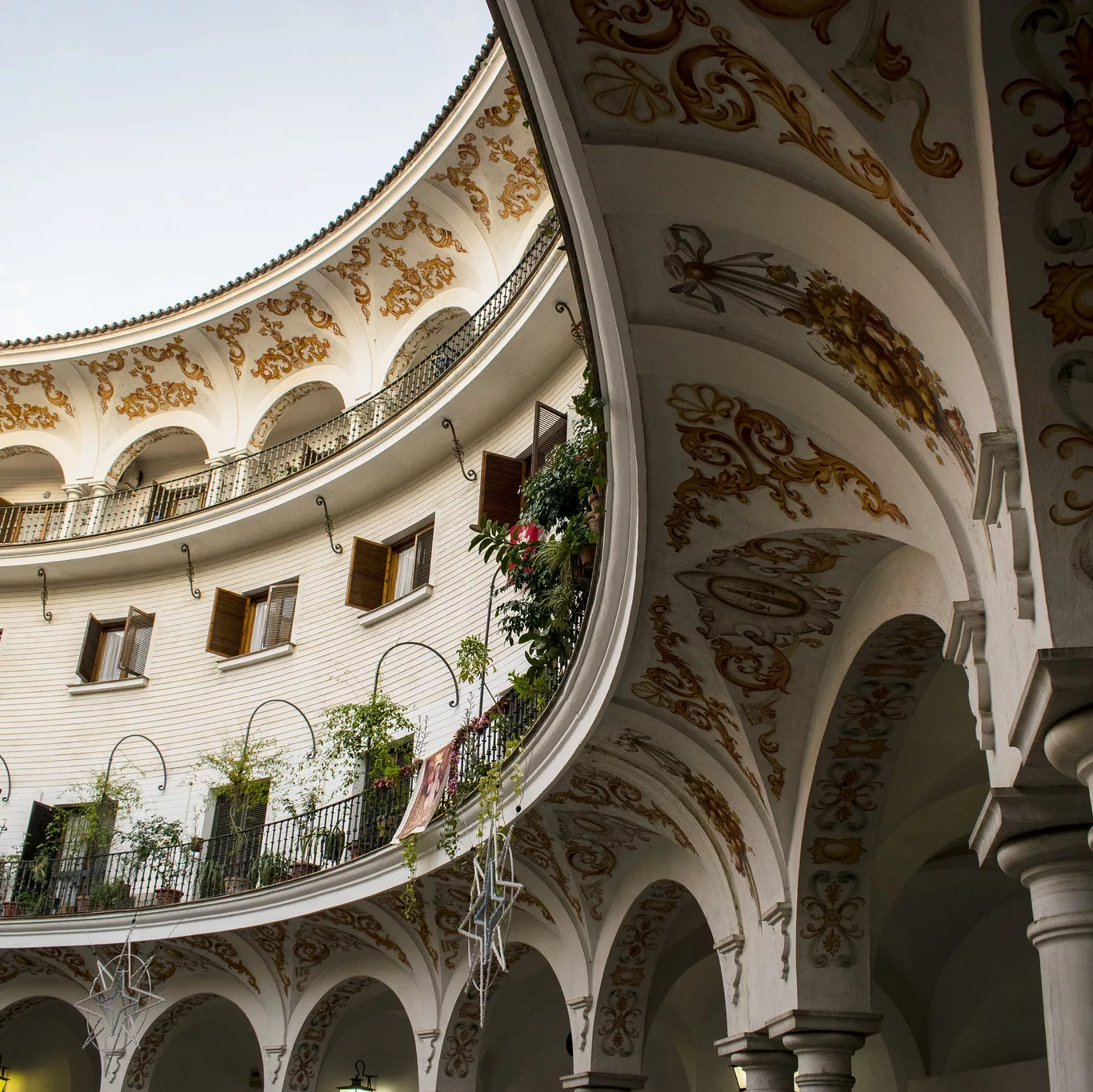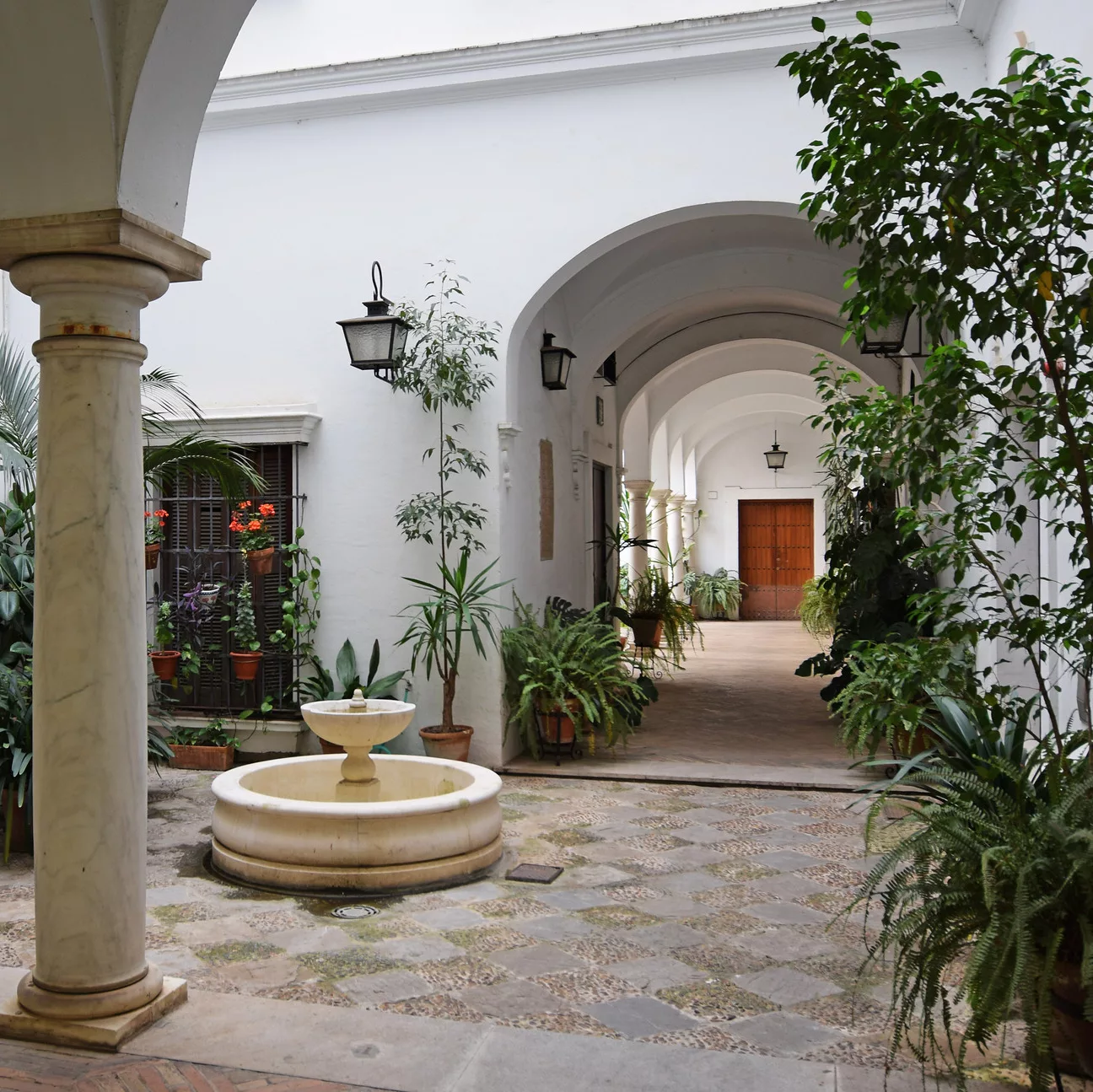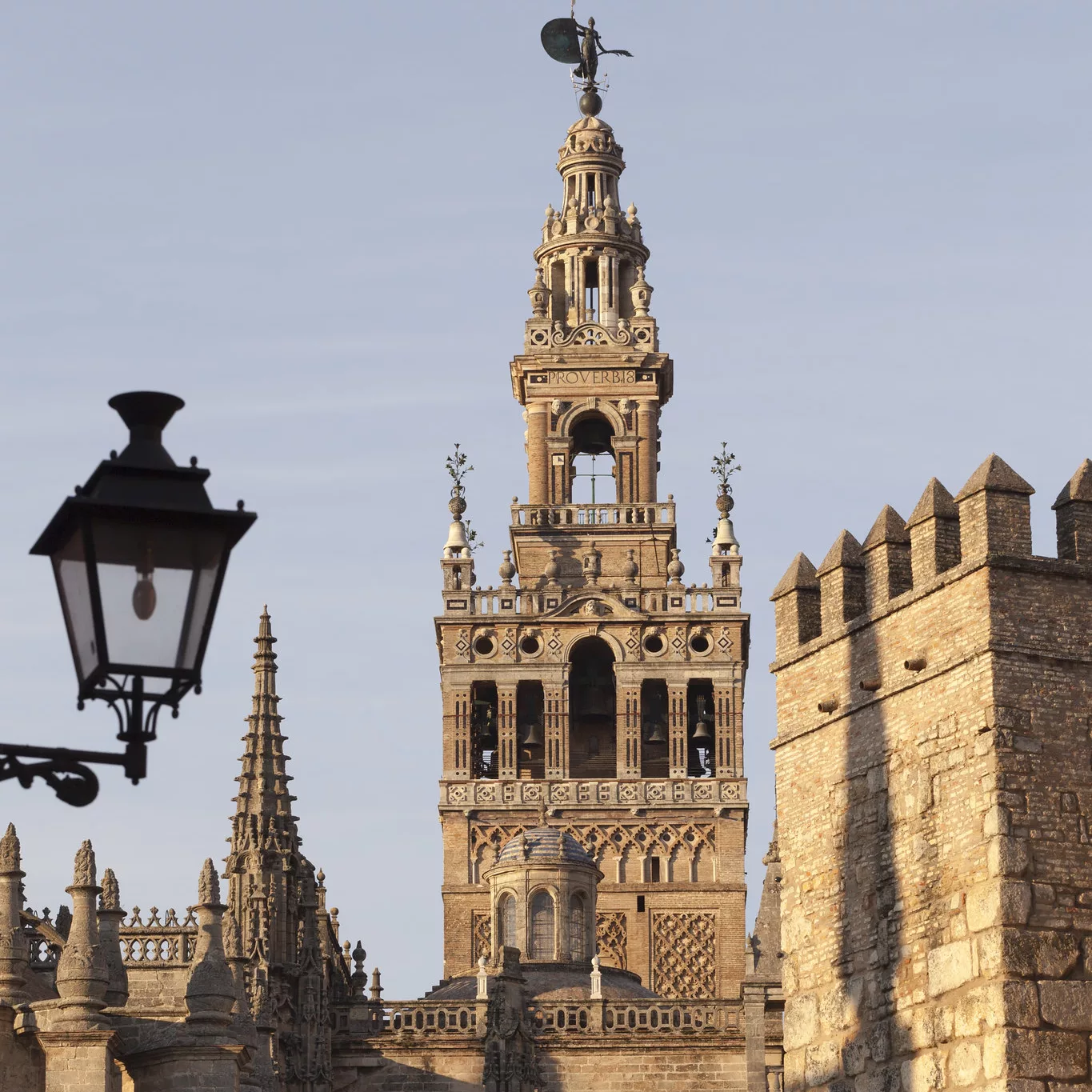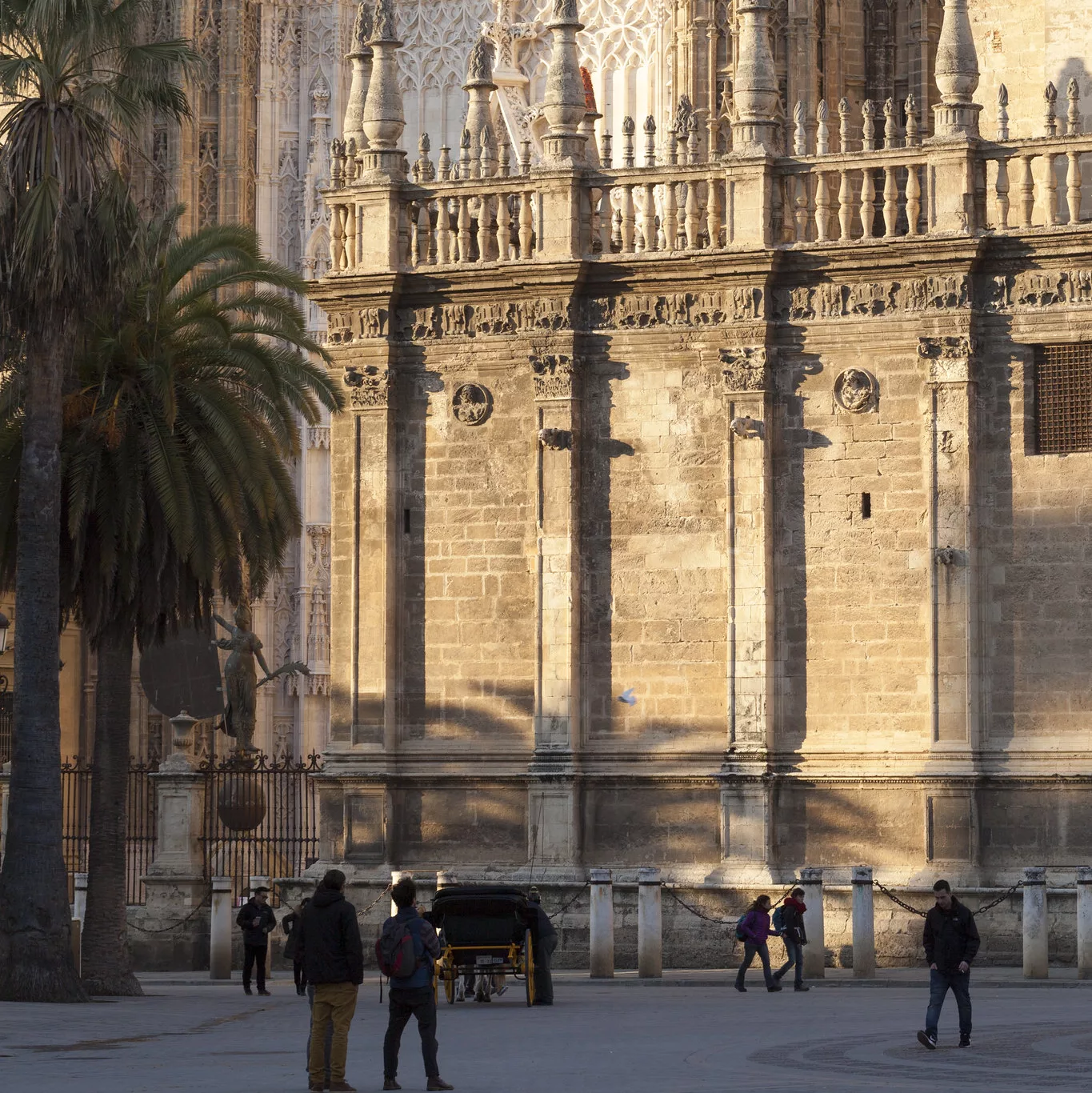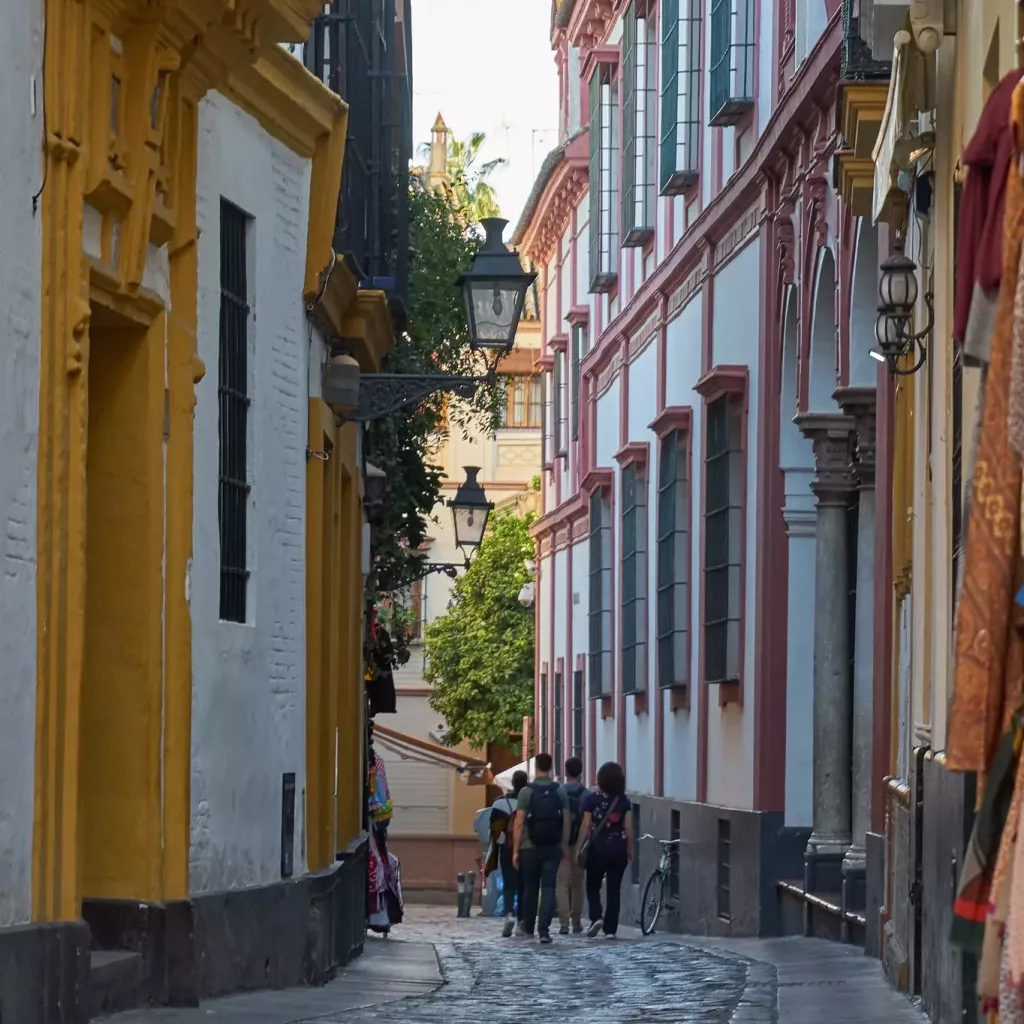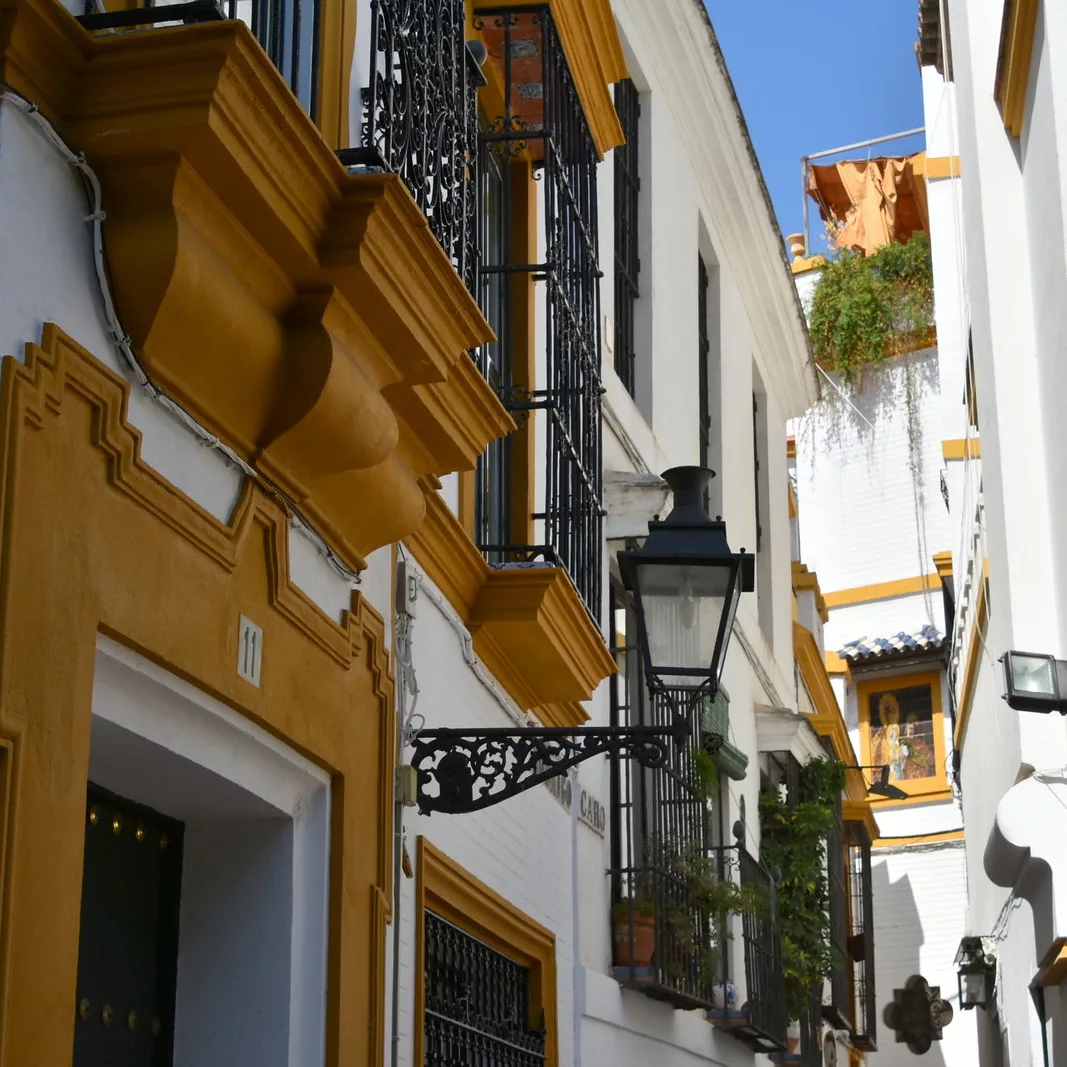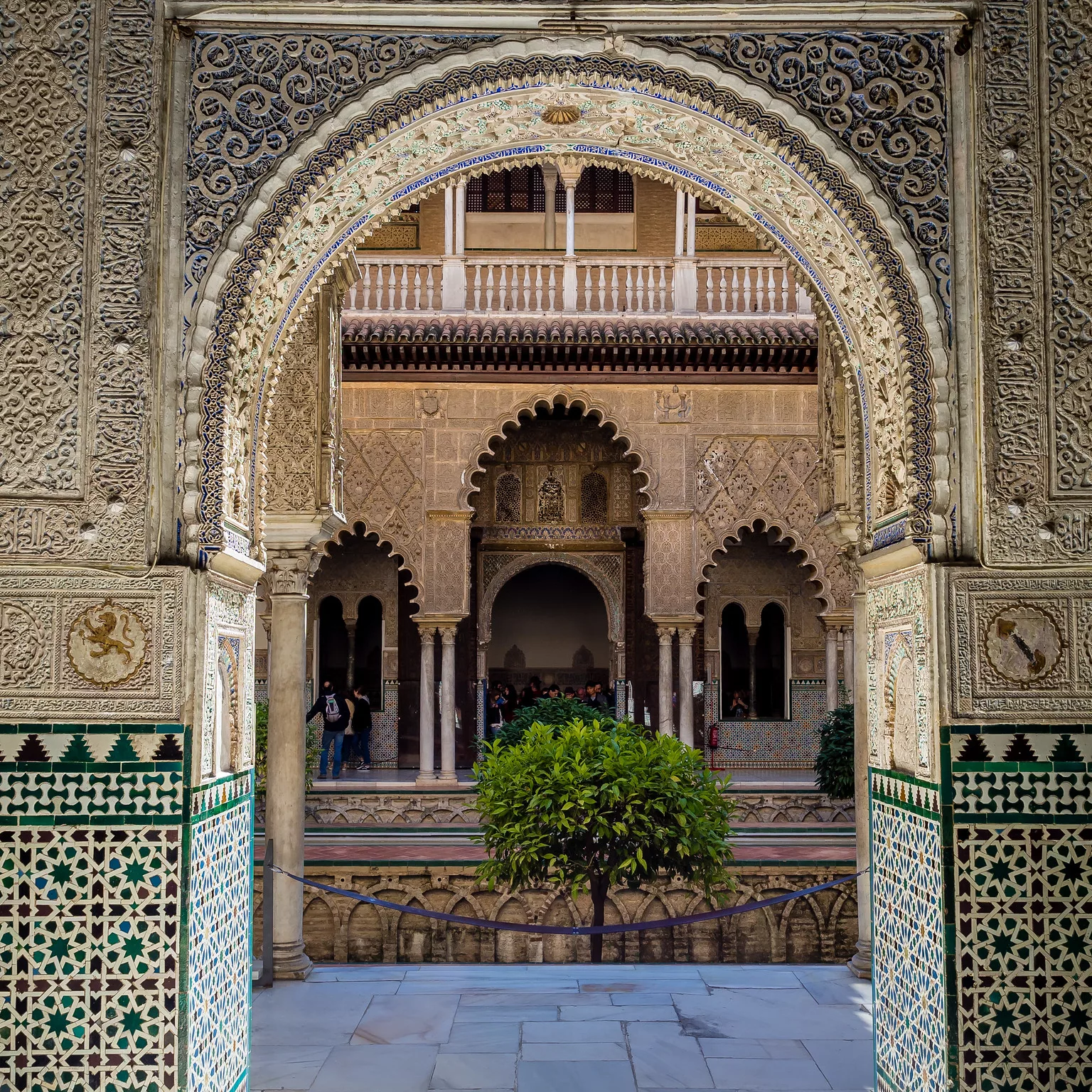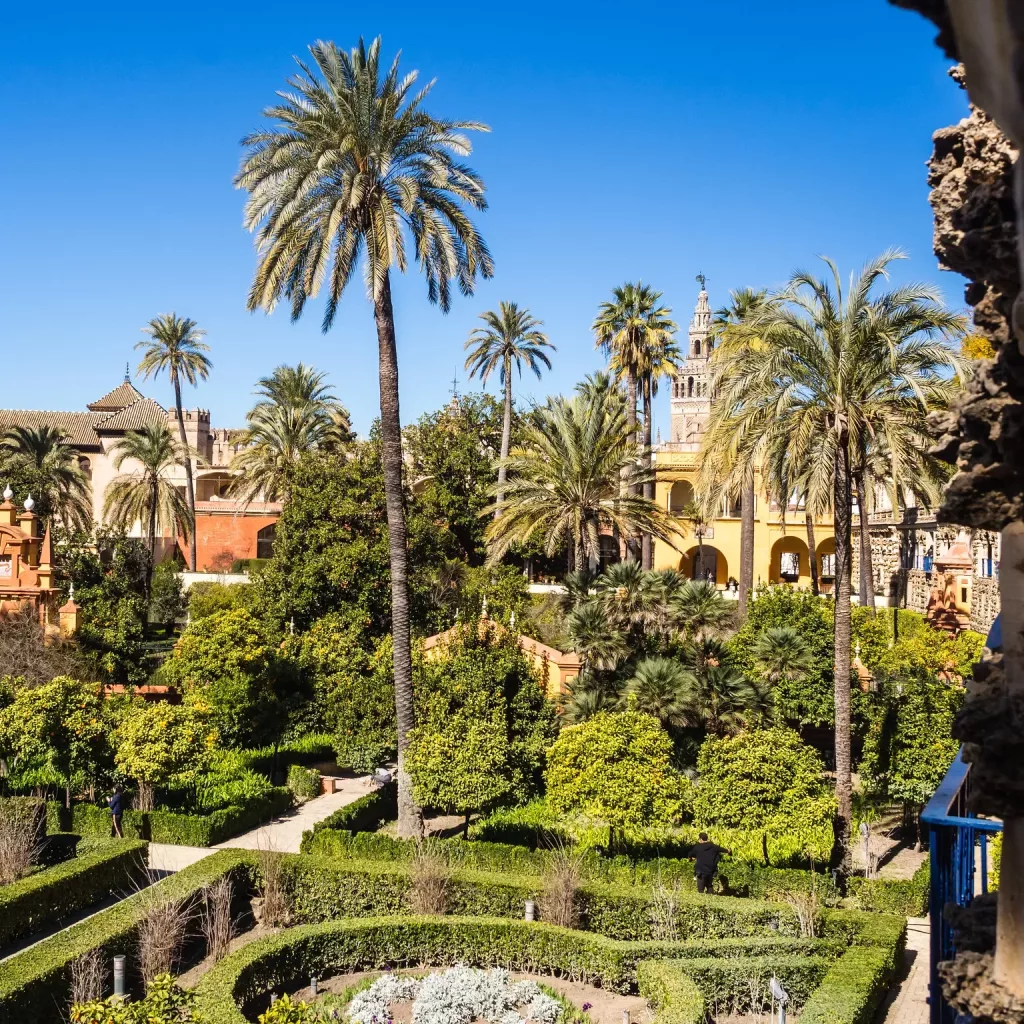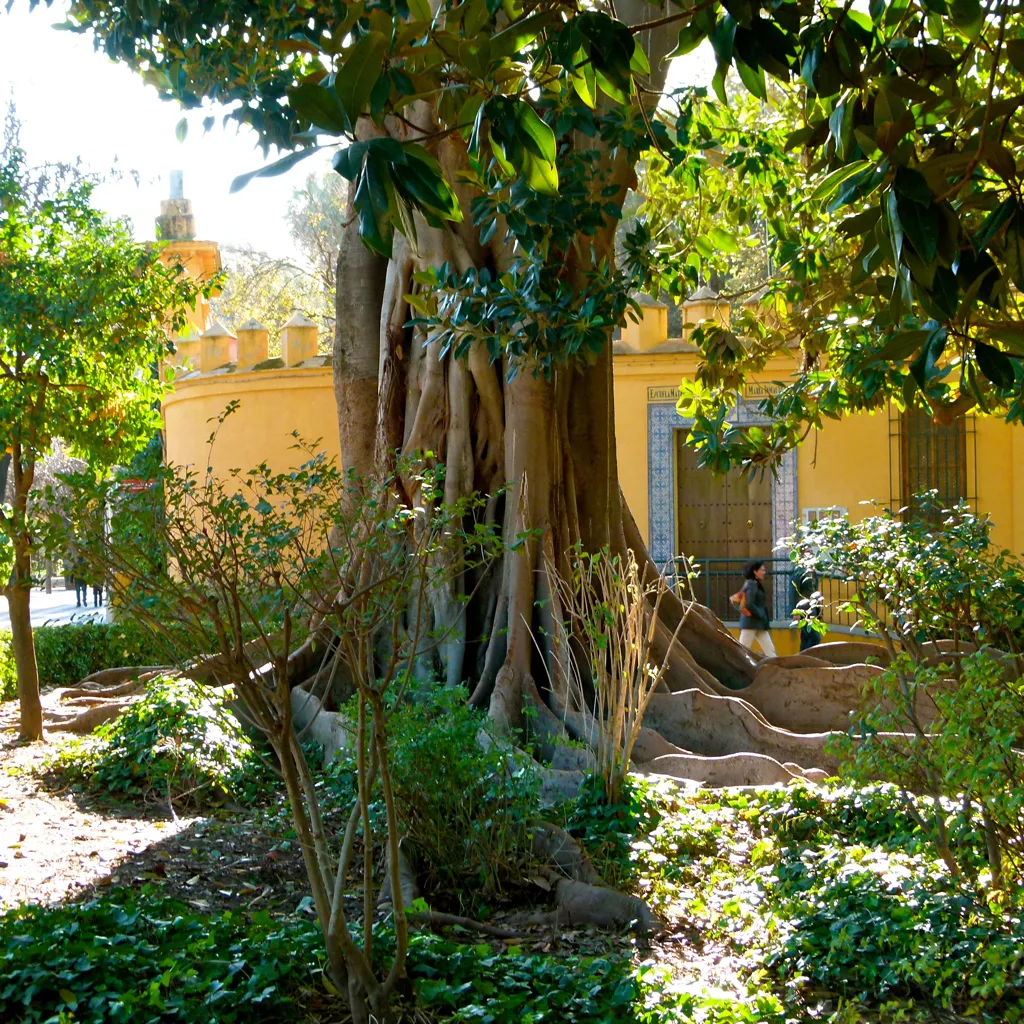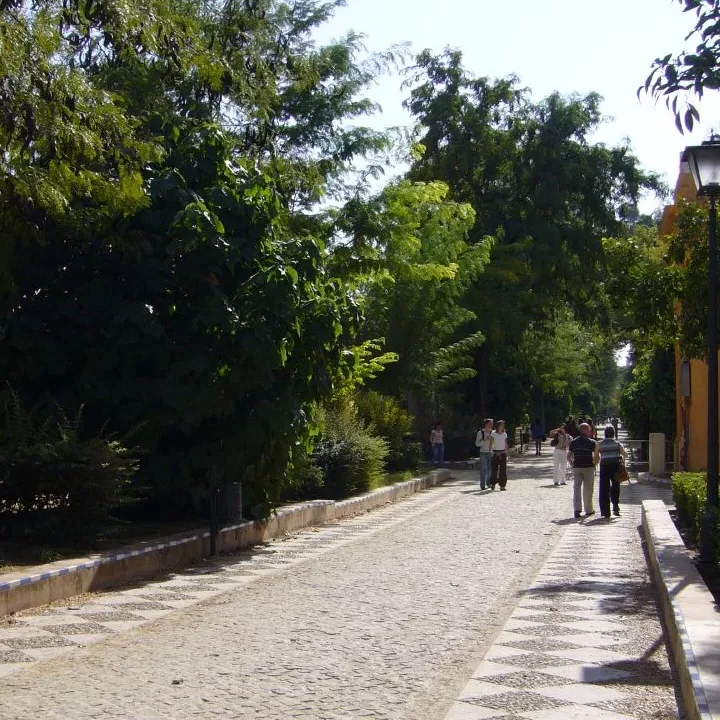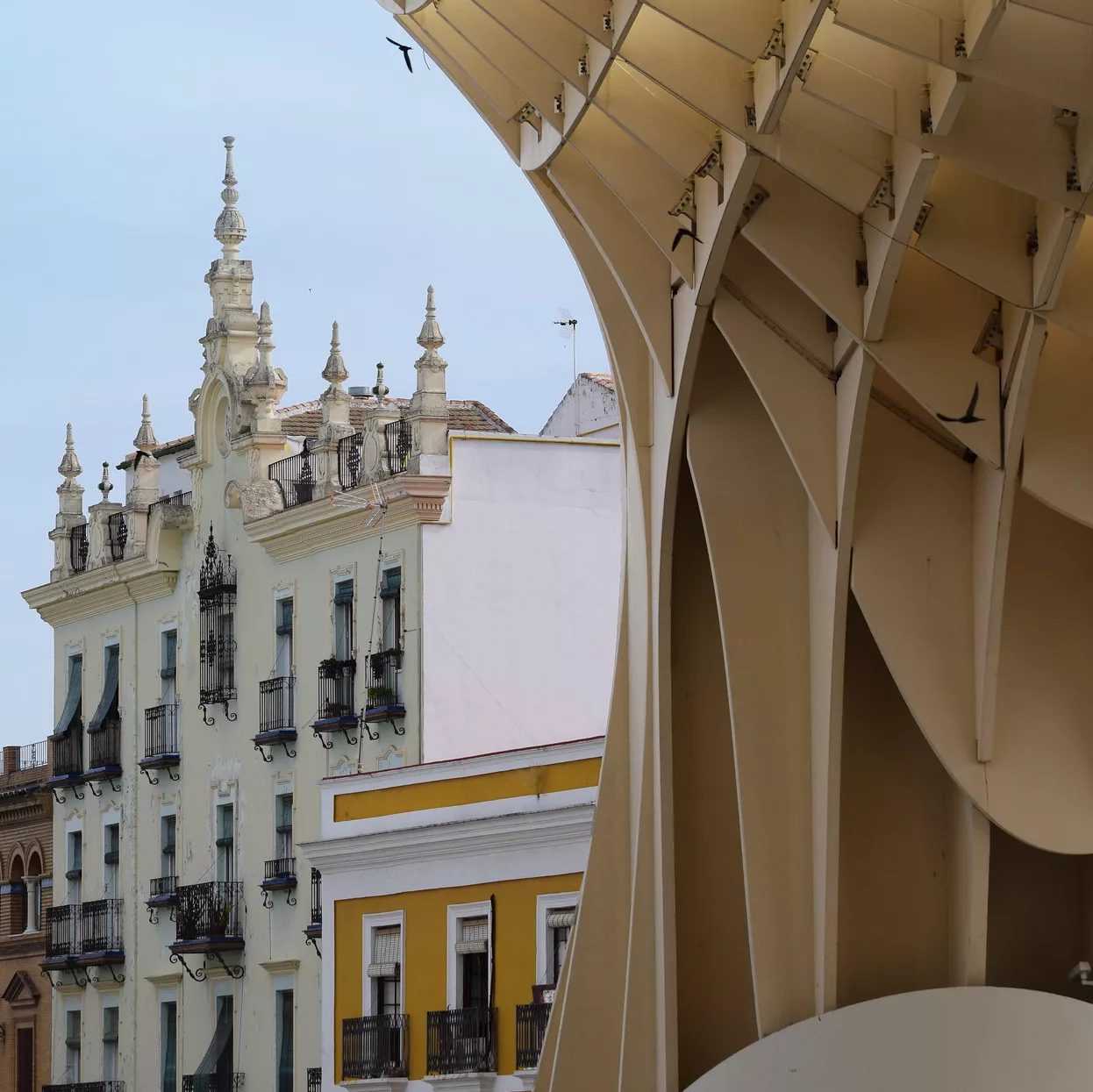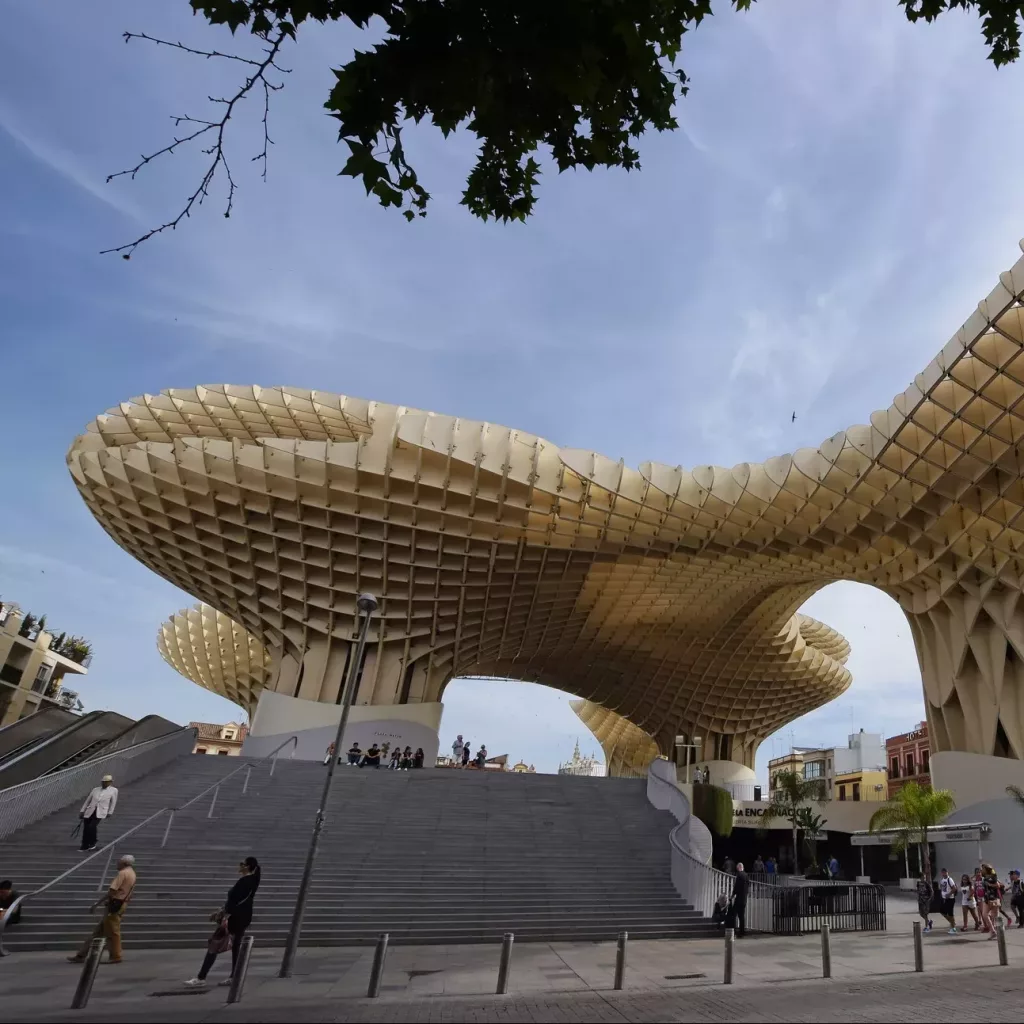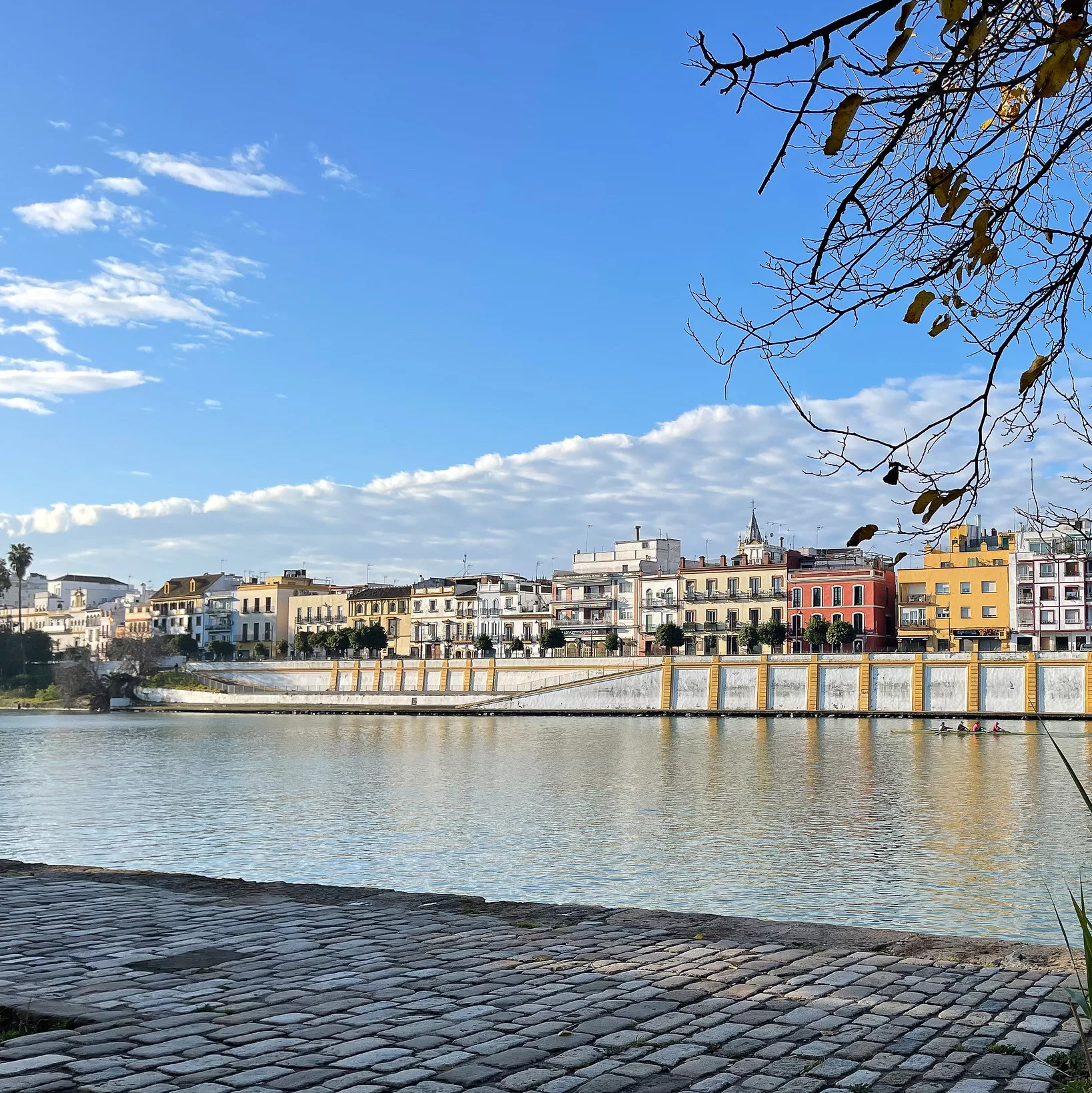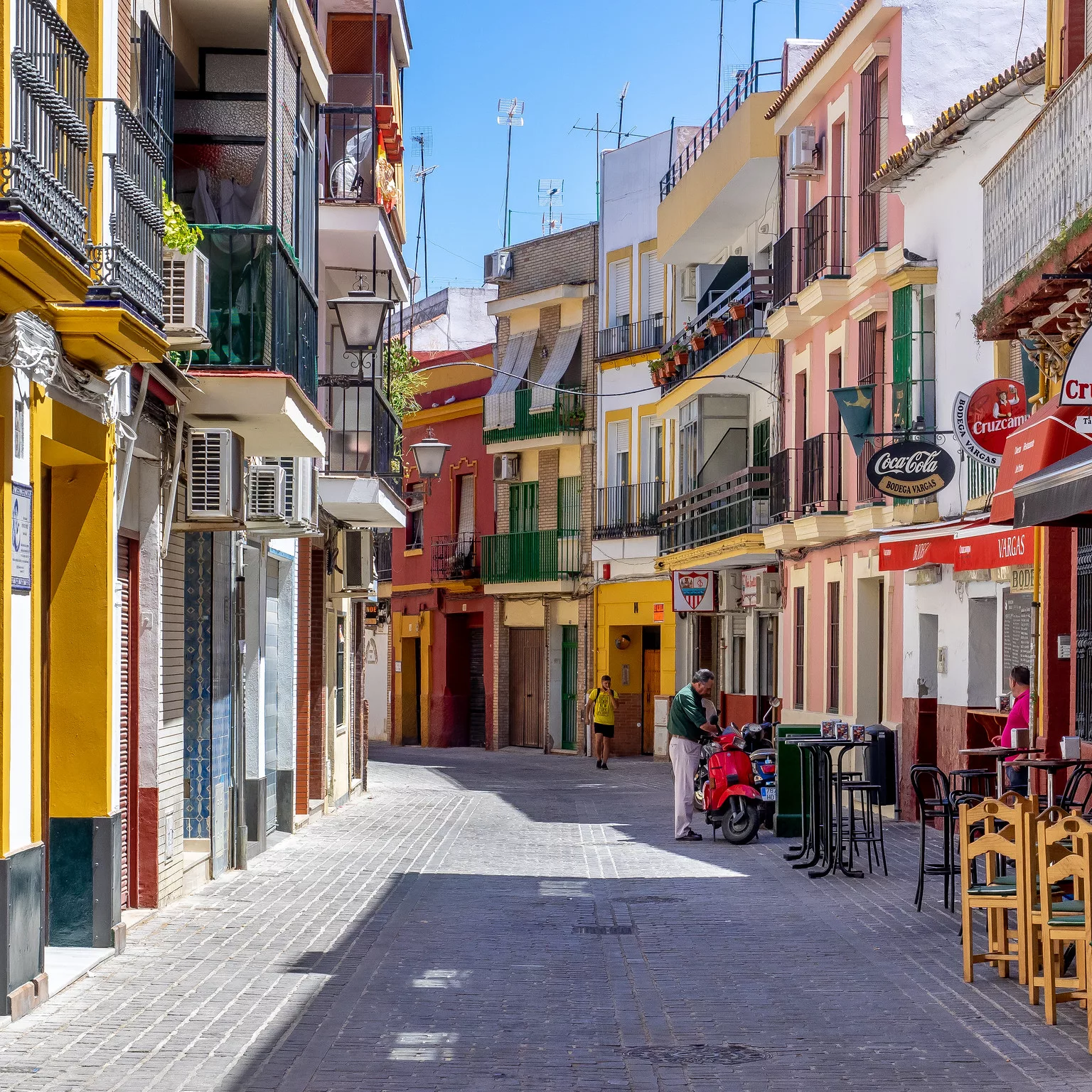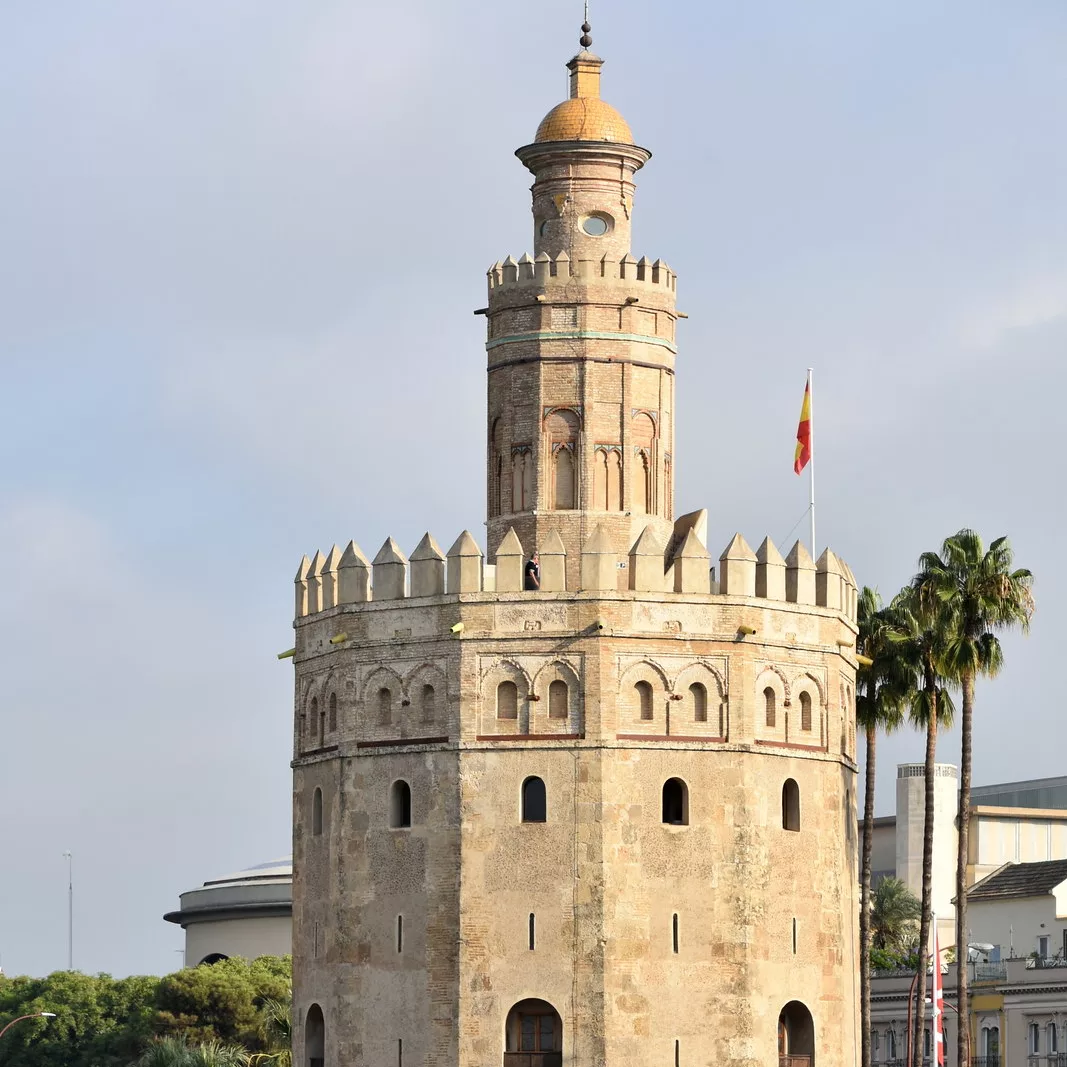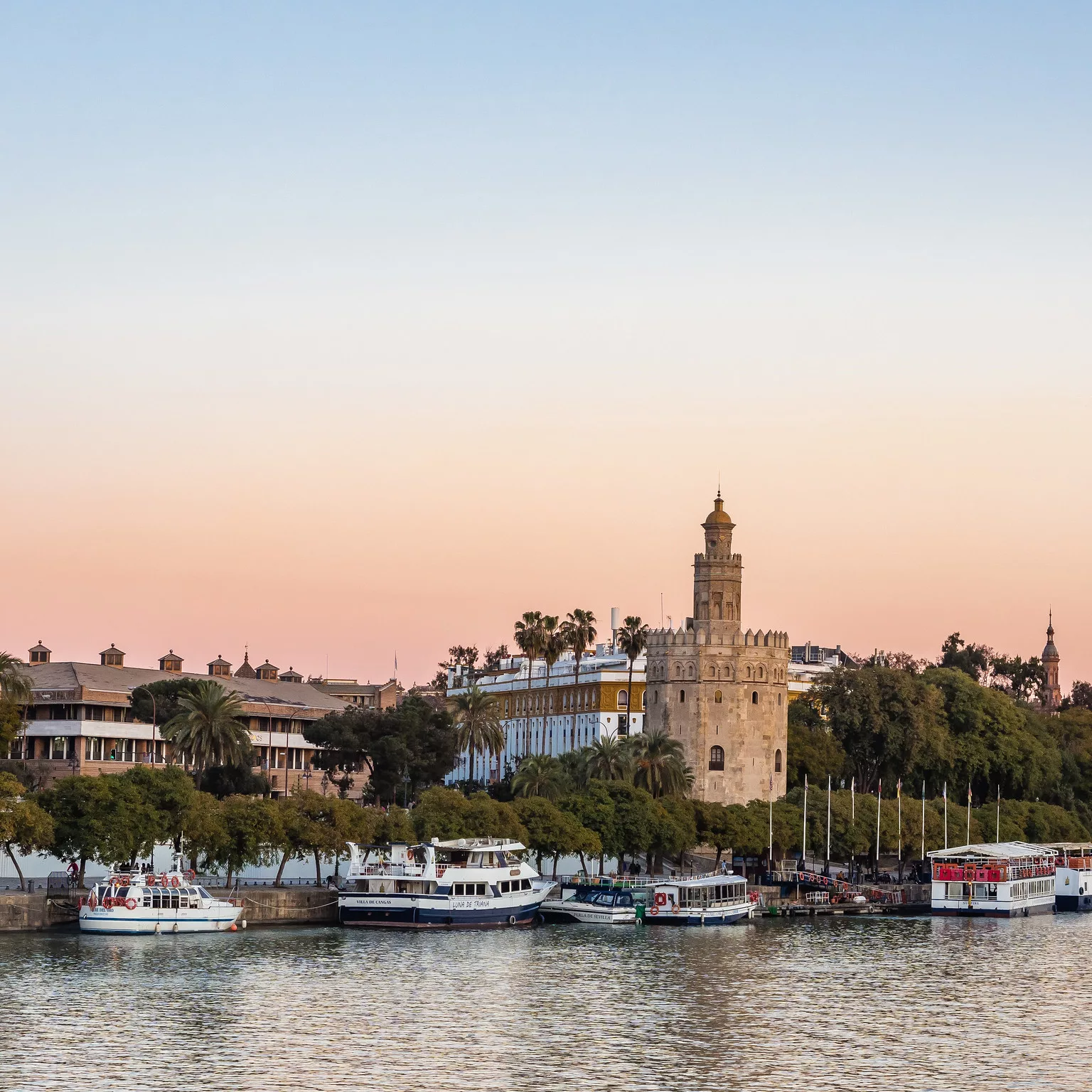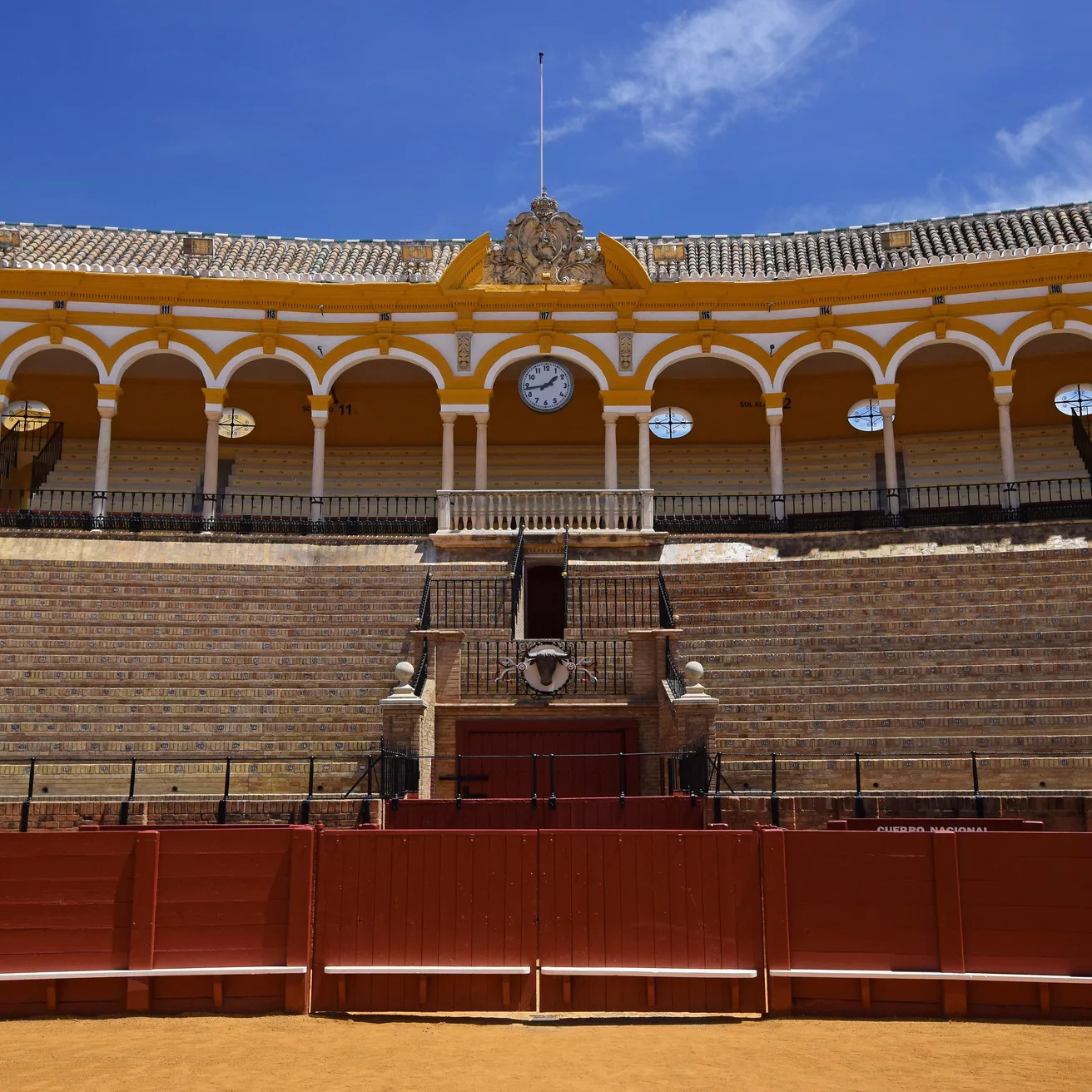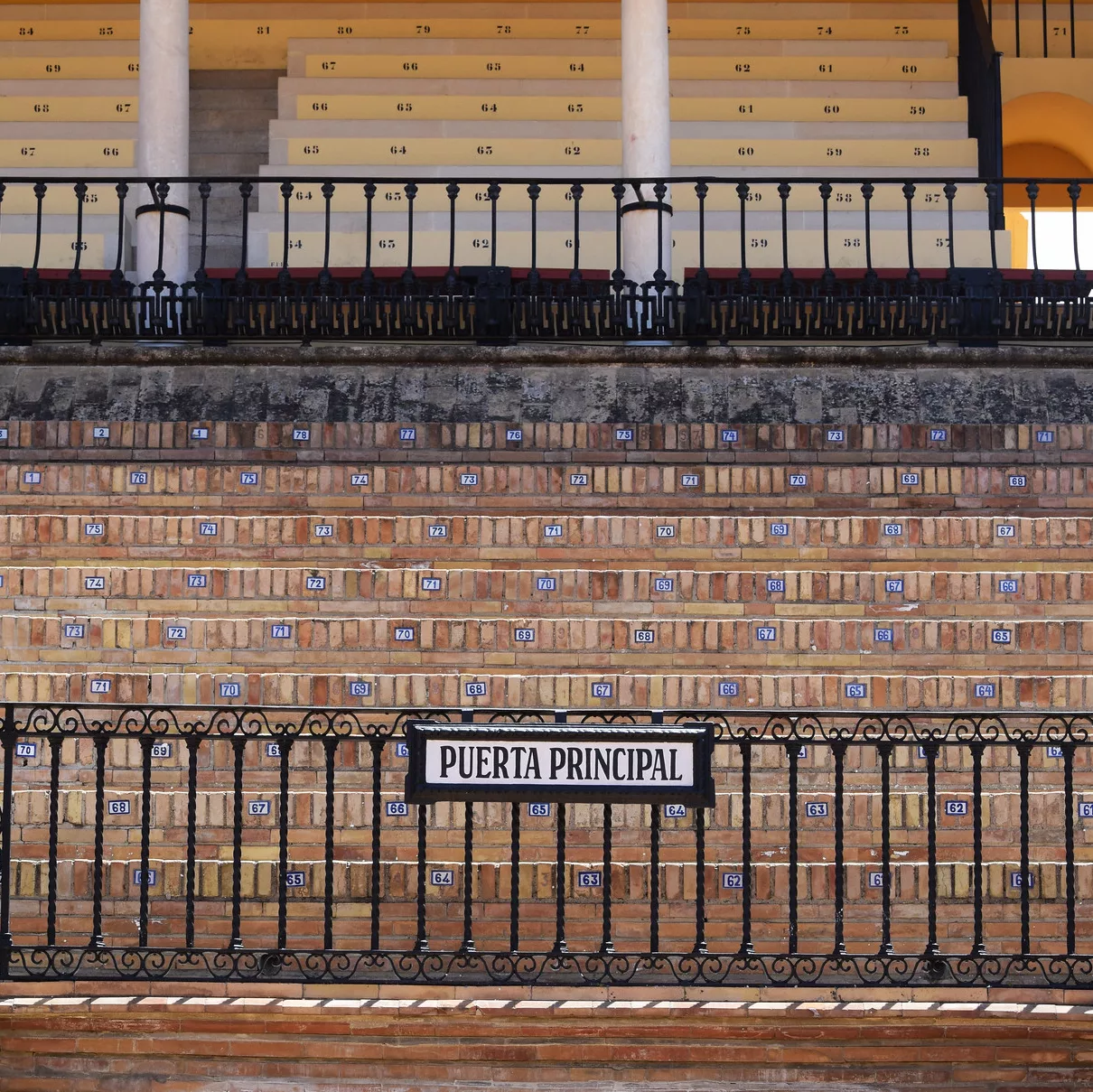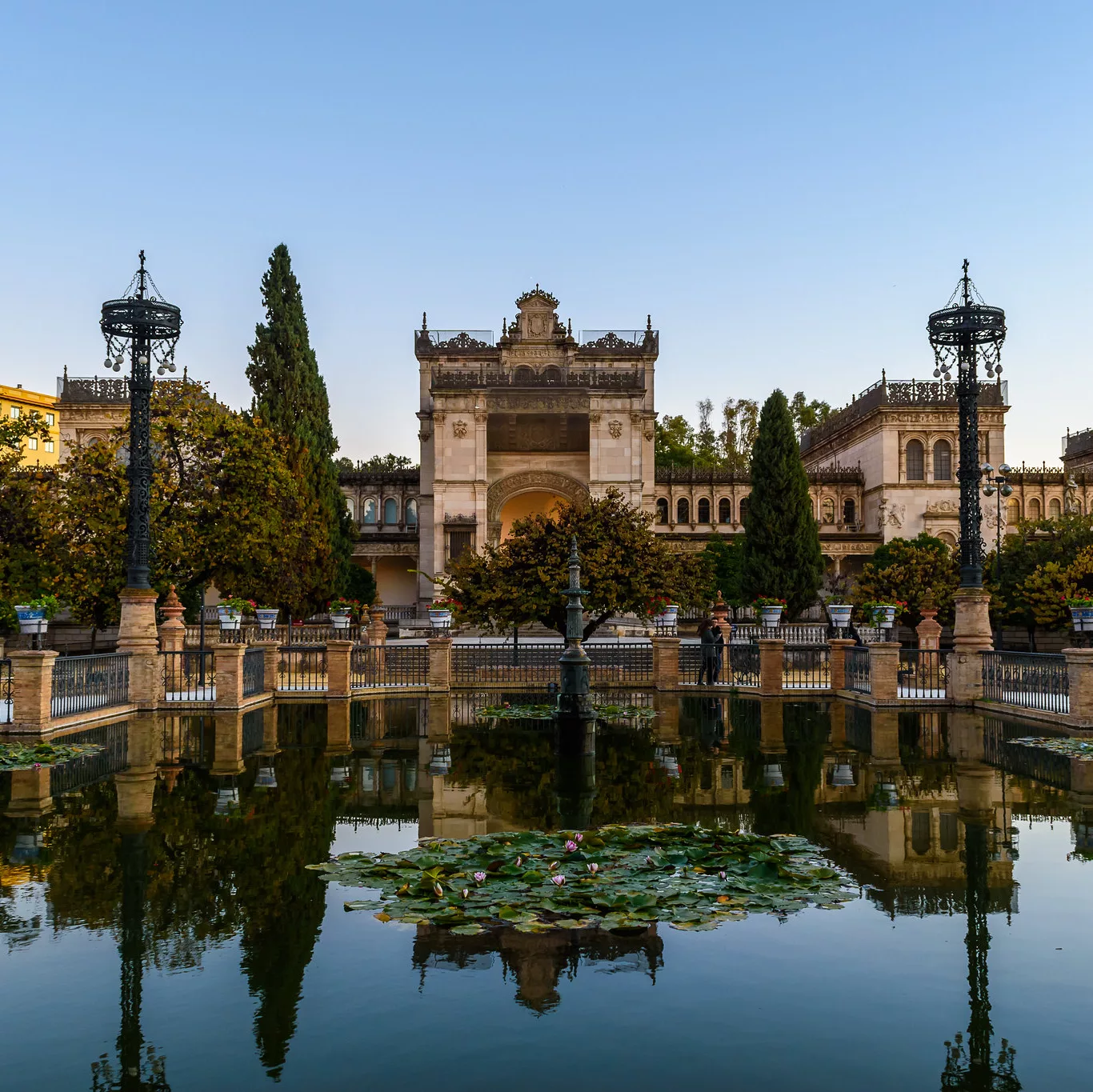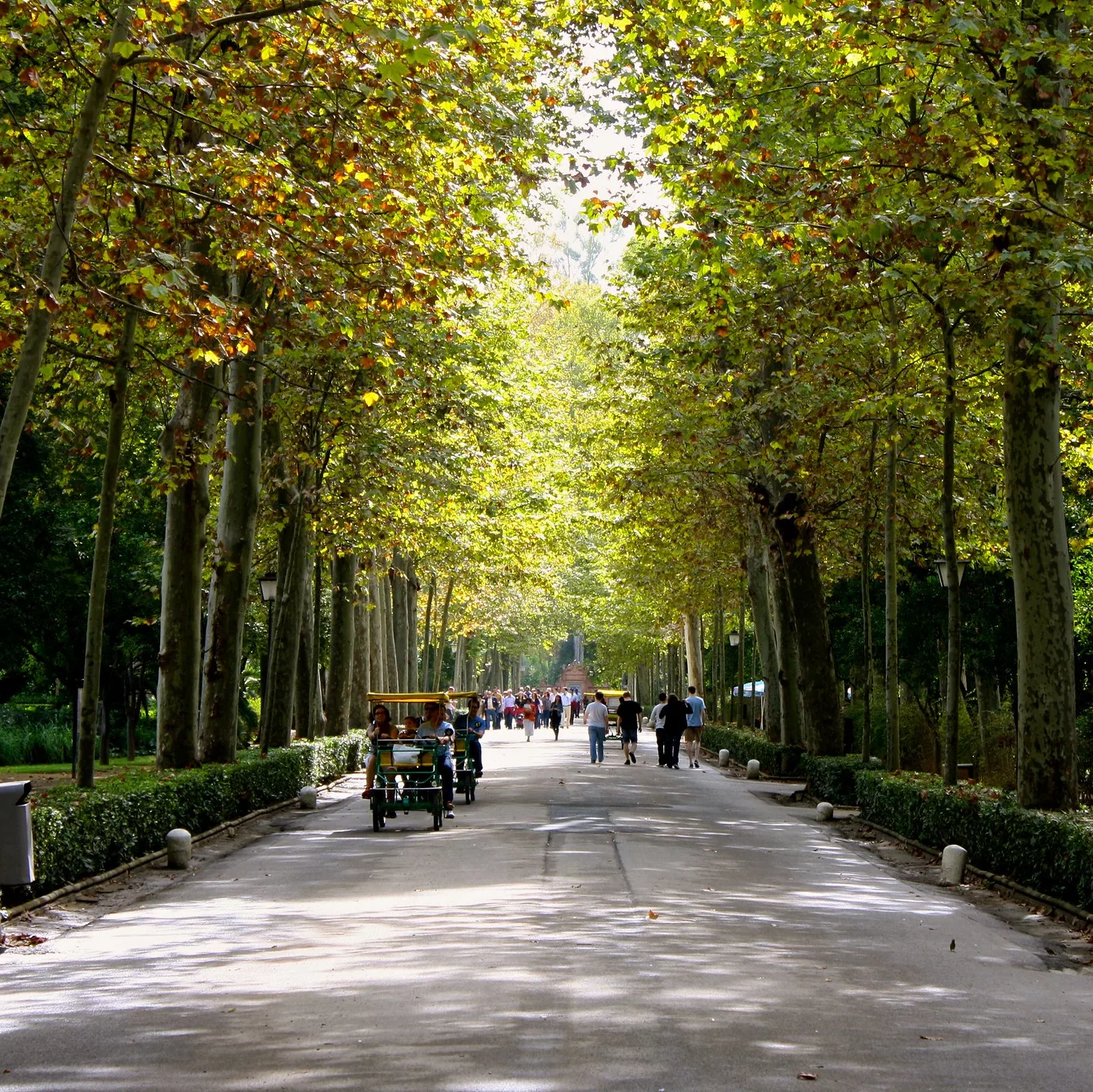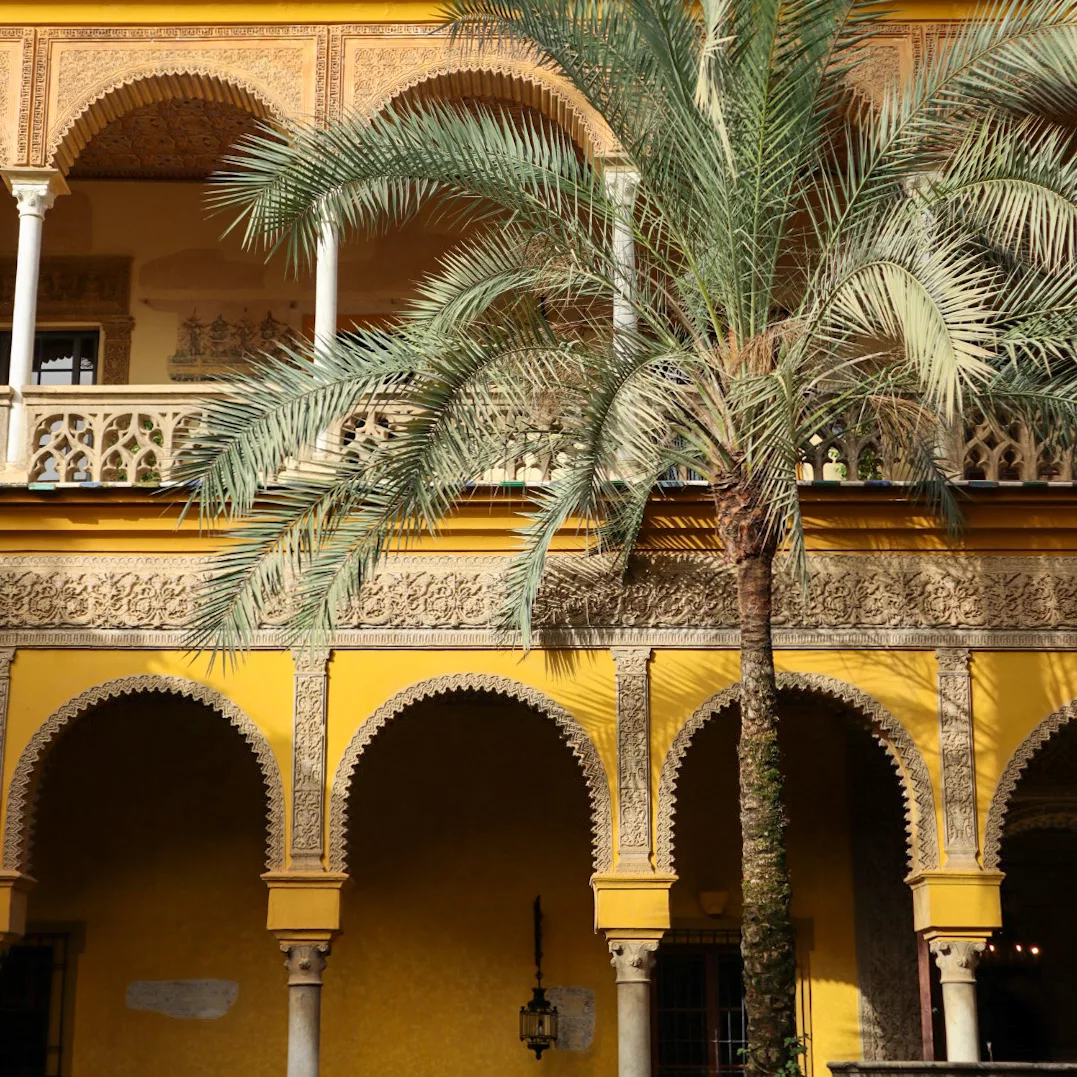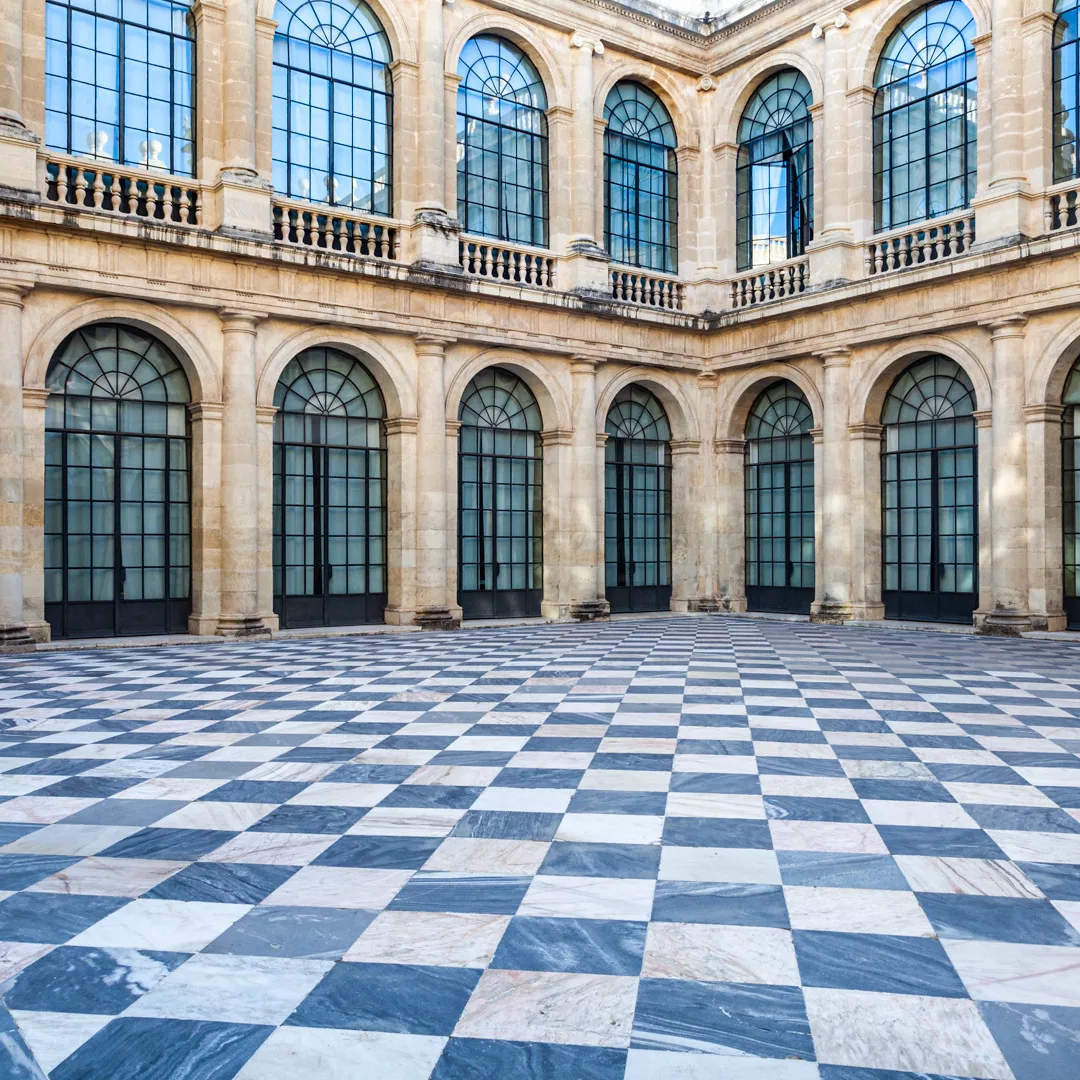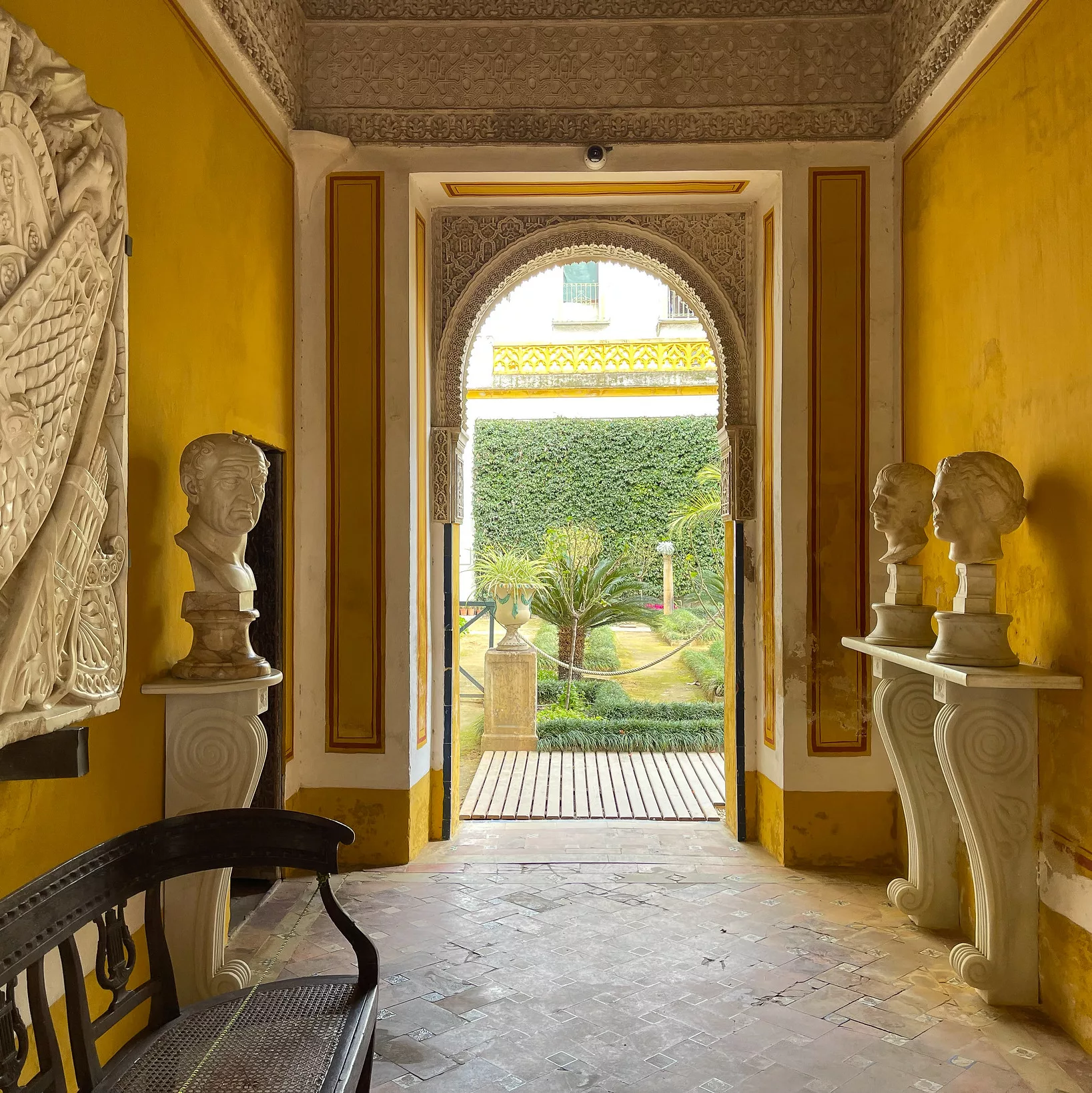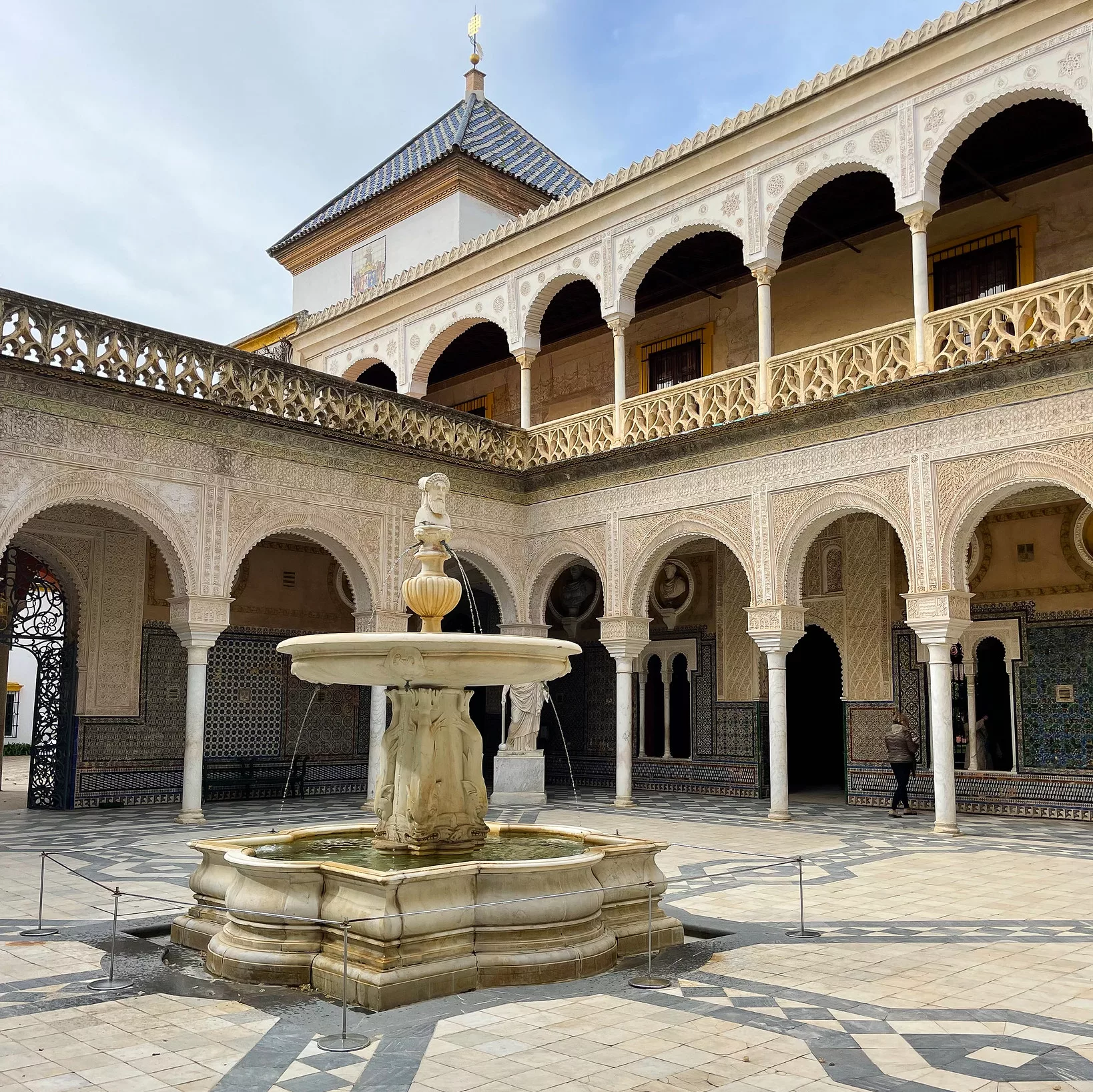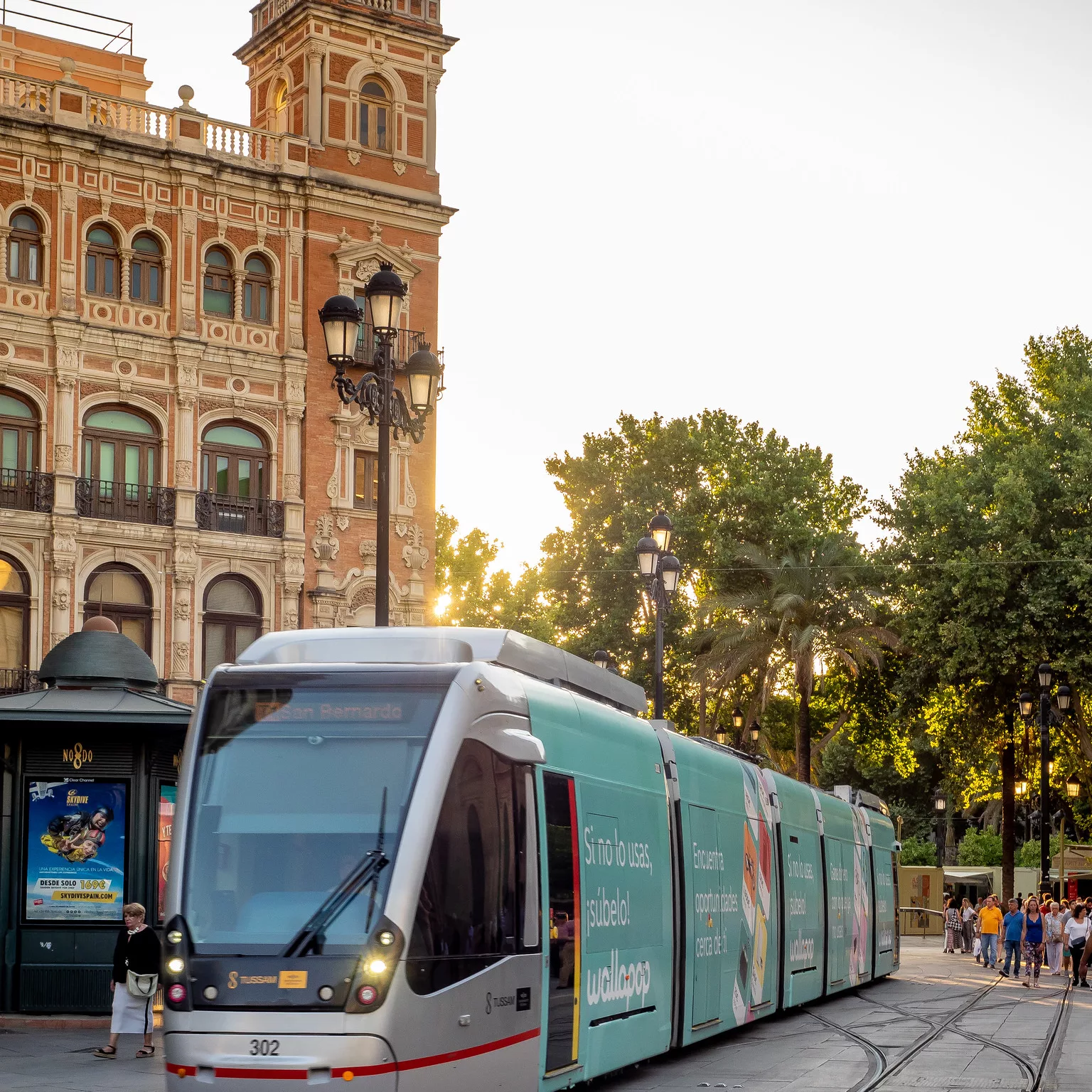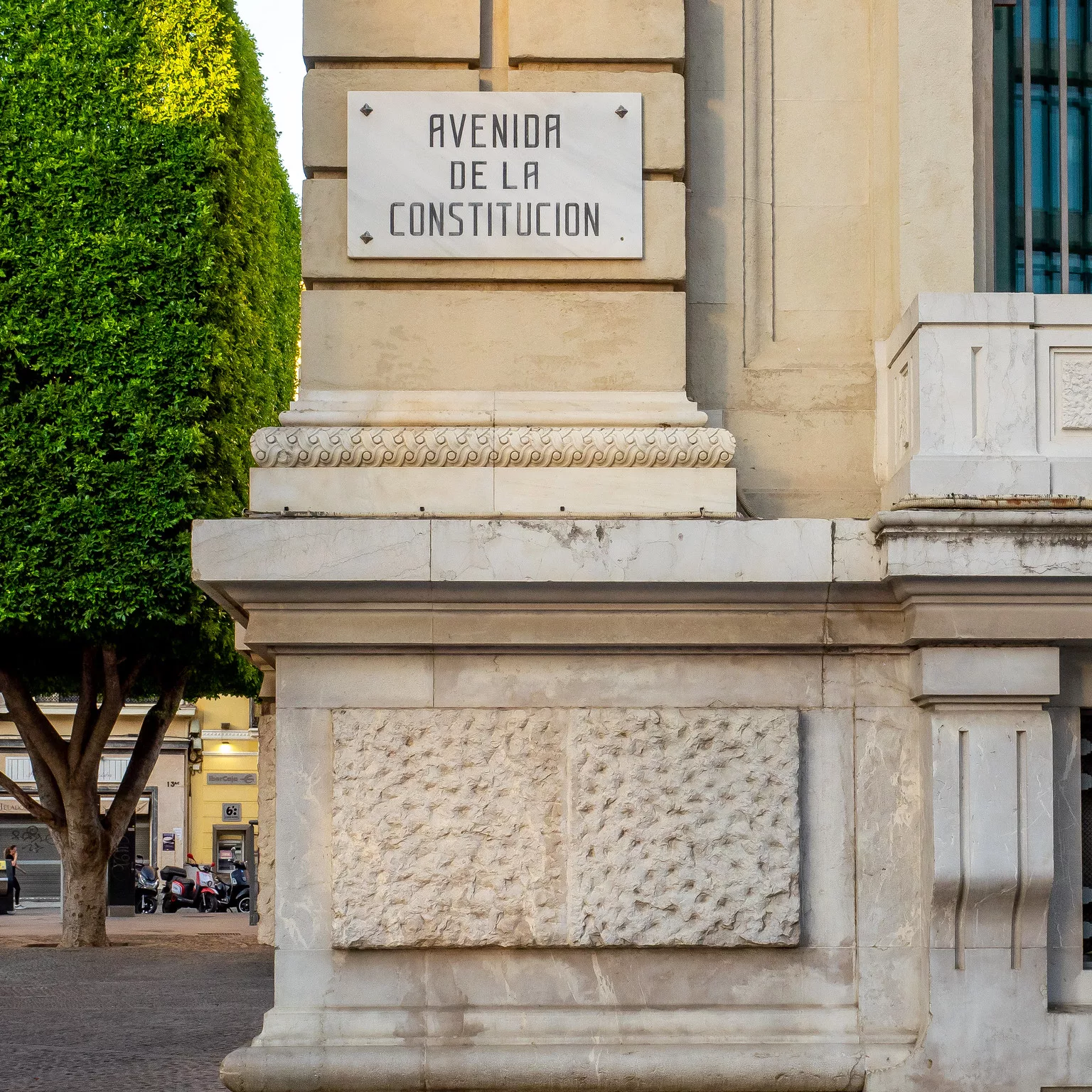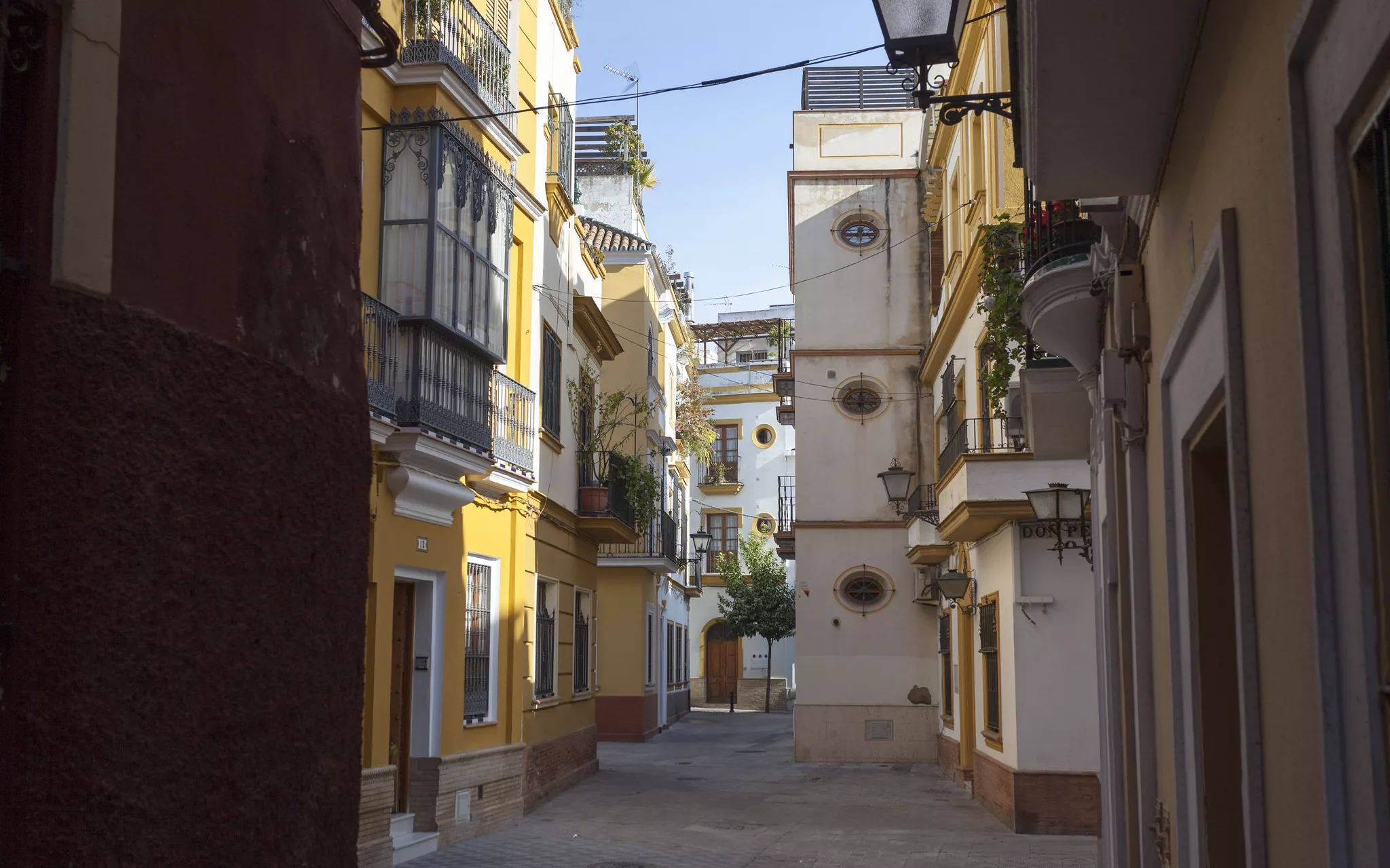
Bathed in sunshine for most of the year, Seville is one of Spain’s hottest and most attractive cities. It’s the kind of place that, once you discover it, you can’t stop thinking about. Orange-scented patios and opulent Mudejar architecture hidden away in the maze of the city’s El Centro are only some of many things that make the capital of Andalusia a dreamscape.
You could spend 7 days in Seville and not feel bored. However, in reality, if you want to see a little more of Andalusia, you can’t spend an entire week in each city.
Two days in Seville is the absolute minimum, and you have to be prepared to move through the attractions in a whirlwind. Unlike Malaga, which boasts a more contemporary vibe with fewer historical sites, everything in Seville carries a sense of grandeur.
It would be difficult to suggest skipping the Plaza de España or the Catedral de Santa María de la Sede. Ideally, to fully appreciate the city without feeling rushed, you should spend 3 days in Seville.
key takeaways
- Seville is a southern city in Spain that is a must-visit on any itinerary in this region.
- If you have only 3 days in Seville, you’ll be able to see the city’s top attractions and even a bit more.
- You’ll get to see several uniquely remarkable monuments in Spain, including a beautiful Arab palace.
- Despite being the largest city in Andalusia, Seville is very walkable.
Jump to
Seville In Three Days – Day-By-Day Overview
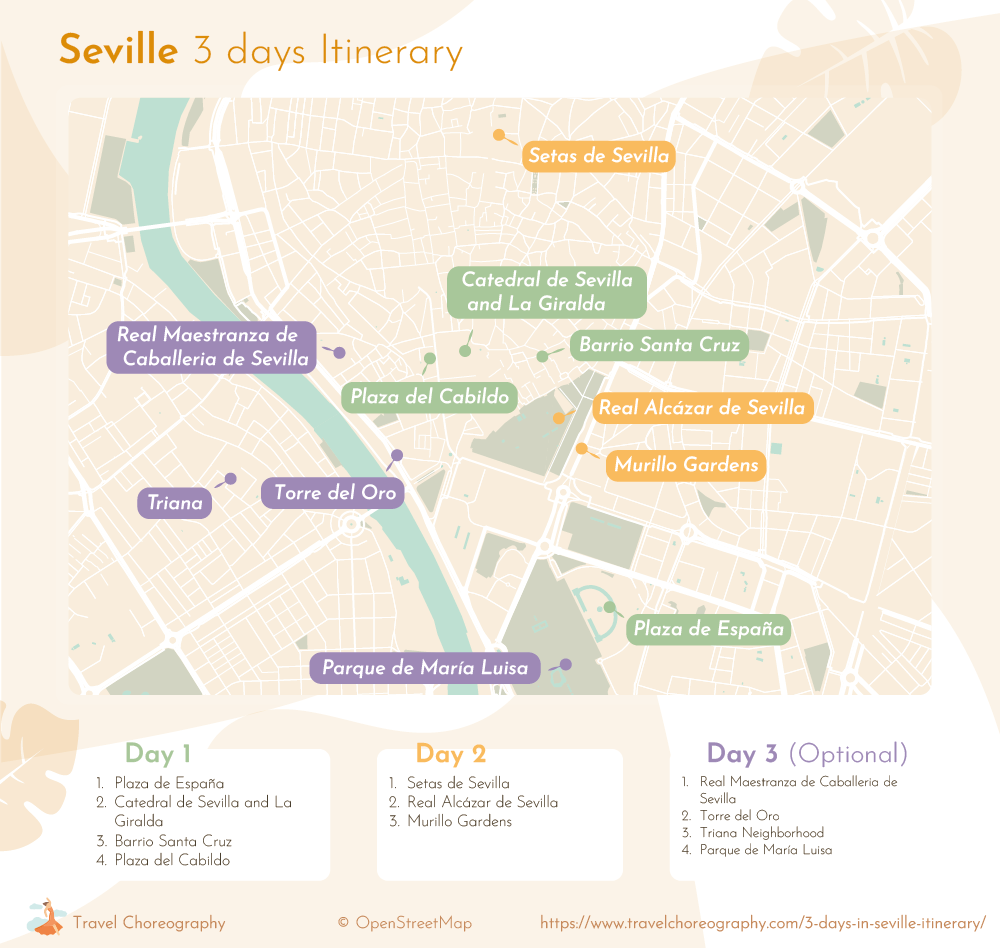
Whether you’re preparing for a weekend city break in Seville or if you’ve set aside 3 days in Seville as part of a larger Spain itinerary, you won’t have a dull moment in Seville.
This 3-day Seville itinerary is a reasonable travel plan recommendation, taking into account the time needed for each of the must-see attractions in the city.
At the end, you’ll find a list of attractions that I haven’t included in the itinerary, as well as possible day trips from Seville.
Day 1
Plaza de España
Put on your sun hat, leave your jetlag behind, and start your visit to Seville with one of its finest landmarks: The Plaza de España. Pictures can hardly capture the sheer size of the Plaza. It’s only once you’re there, surrounded by a blend of Renaissance and Moorish Revival architecture, that you truly grasp why it ranks among the best things to do in Seville.
Situated at one end of María Luisa Park, The Plaza de España was built in 1928. The country’s most imposing square was meant to Represents the Ancient Kingdom of Spain. Indeed, the Plaza features tiled alcoves, each depicting a specific province of Spain, along with a 515-meter-long canal. Forming a semicircle around the canal, you’ll find a vast and imposing building. There are also fountains, bridges and so much to learn while exploring this beautiful gem.
You can easily spend 2 to 3 hours at the Plaza de España. One notable highlight is taking a rowboat around the water of the canal, often referred to as the “Venice of Spain!”

Small-Group Walking Tour of Seville
Plaza del Cabildo
Have lunch and head north to the heart of Seville’s Centro. Just 1.5 km away, you’ll discover the Plaza del Cabildo hidden away behind the cathedral. Unassuming in its charm, the Plaza del Cabildo is a hidden gem of Seville.
Located in the Arenal neighborhood, this semi-circular building (Seville seems to love these!) features delicate white columns and intricate Arabesque frescoes. Facing it, you’ll find the remains of an Almohad wall (reminiscent of those you’d find in Fez or Marrakesh).
The building hosts various shops catering to collectors of coins, stamps, and antiques. Additionally, there’s a store where you can buy sweets made in Seville’s convents. If you happen to visit on a Sunday morning, you’ll encounter a charming flea market.
Quick tip: This is a great spot for a photo-op and the perfect place to escape the crowds for a 5-minute break, as the plaza is shaded from the sun.
Catedral de Sevilla + La Giralda
Go back the way you came and head to Seville Cathedral, only a 3-minute walk away. The Cathedral of Seville is one of the three UNESCO World Heritage sites in the city.
Nestled in the north of Barrio Santa Cruz, the cathedral sometimes feels like a massive walled fortress. It has a certain indescribable quality that becomes clear once you learn its secret: before being transformed into the world’s largest Gothic church, it was originally a mosque. You can see this history in the bell tower, the famous Giralda, which would fit right in behind the walls of a kasbah.
You don’t need to be a church enthusiast to appreciate the Cathedral of Saint Mary of the See. In fact, you can’t really say you’ve visited the city if you haven’t seen it. You won’t want to miss this, as it’s one of the absolute best things to do in Seville in just 3 days!
The Catedral de Sevilla has a way of making you feel small. There are so many things here that will make you amazed: the Capilla Mayor, the works of Goya and Murillo, and a grand tomb that’s said to holds the remains of Christopher Columbus. (This matter was supposedly settled in 2006.)
If you like being outside, the church has something special for you. You can climb up the 34 ramps to the top of the Giralda. The views over Seville from the bell tower, which is over 100 meters high, are truly breathtaking and definitely worth the effort. And what about the Patio de los Naranjos ? Take a stroll around the lovely courtyard with its sixty-something orange trees, where the sweet scent of orange blossom say goodbye with a kiss as you head to your next destination.
However, you don’t have to say farewell. The Rooftop Tour of Seville Cathedral is one of the finest spots in the city to watch the sunset.
In any case, plan for around 1 to 2 hours to visit the Cathedral.
Wander along the charming streets of Santa Cruz
What better way to end this first of 3 days in Seville than by simply wandering through the streets of Barrio Santa Cruz? You don’t need to stay in this neighborhood, which is considered one of the best places to stay in Seville, to enjoy it. A long time ago (1492 to be exact), Santa Cruz used to be Jewish quarter of Seville before being abandoned for 400 years. Fortunately, it underwent significant restoration in the 1900s. Back to its beautiful self, it has an enchanting and timeless charm that akin to the Judería de Córdoba.
If you’re leaving Seville Cathedral, you’re already in the right spot because the church is actually part of Barrio Santa Cruz.
The narrow pathways, adorned with rows of colorful houses, are really lovely. These small streets provide relief from the intense summer sun of Seville. At every corner, you’ll find orange trees, azulejos, fountains, and benches made of brick and tile. It’s not only the aroma of oranges that fills the air; you’ll also notice the fragrance of blooming flowers in the courtyards of private houses.
Take a moment to appreciate the simple beauty of this old-time area before ducking into a tapas bar for dinner.



Walking Tour: See the Santa Cruz Neighbourhood with Feel the City Tours
Day 2
Real Alcázar of Seville
There is a reason why we saved the Real Alcazar de Sevilla for the second day. Out of all the amazing things the city has to offer, it’s without a doubt the best thing to see in Seville. The cream of the crop!
The royal palace/fortress is just a stone’s throw away from Seville Cathedral and the General Archive of the Indies. The Real Alcazar is a stunning example of a type of architecture called Mudéjar. It became a UNESCO World Heritage Site in 1987. Some parts of the palace, most notably the Palacio del Yeso, date back one thousand years!
One room after another, the wonders of the Alcazar of Seville will charm you, just as they have charmed so many others before you. You have surely heard of the Courtyard of the Maidens and the Salon de Embajadores, but you will not forget them after walking the marble floors of the palace.
The Real Alcazar is famous not just for its architecture and beautiful tile decorations, but also for its lovely gardens. The gardens are a mix of different styles, like Islamic, Renaissance, and English gardens. Palm trees reaching high into the sky and jasmine flowers in full bloom are just some of the things that make this spot in Seville magical.
If you really like all things regal, you should definitely check out the Cuarto Real Alto. These are the royal apartments that are still used by the Spanish royals today.
Also, just like you can visit the Alhambra at night, you can do the same with the Real Alcazar. However, while the gardens are more challenging to visit after dusk, the palaces illuminated by soft light possess an undeniable magic. If you understand Spanish, you can listen to actors in costumes sing and dance while telling the story of the palace. Even if you don’t, visiting the Alcazar at night is still worth it, just for its intimate atmosphere.
Plan to spend about 3 hours to fully enjoy the Real Alcazar of Seville.
Murillo Gardens
Just behind the Real Alcazar, there’s a lovely garden you can walk through before moving on to the next attraction on this itinerary. This place is a tribute to Seville’s painter Murillo. Interestingly, this area used to be vegetable gardens that were once part of the Real Alcazar. Back in 1911, King Alfonso XIII gave this land to the city.
The Jardines de Murillo are just one of the many attractive gardens in Seville. It features numerous fountains, statues, and monuments, including the Monumento a Colón (a spectacular statue dedicated to Christopher Columbus). All of this is surrounded by lots of orange trees, date palms and colorful flowers.
If you didn’t know, Seville is well-known for its bitter oranges. Your trip to Seville could be a great time to discover all the fantastic things you can make with this glorious fruit.
Sit on one of the many beautiful tiled benches enjoy the scenery for a spell.
Las Setas de Sevilla
Las Setas is a 17-minute walk from Murillo Gardens and the Real Alcazar de Seville. Originally named Metropol Parasol, this huge structure (which also happens to be the world’s largest wooden construction) is commonly referred to as Las Setas de Sevilla because of its mushroom-like appearance.
It’s one of the best things to do in Seville because its rooftop terrace has one of the best panoramic views of the old town.
The structure, which was completed in 2011, is not just an observation deck. Las Setas also houses an archaeological exhibition showcasing ruins from ancient Roman, Visigoth, and Moorish eras, a charming little market, and a restaurant.
Even though the structure soars into the sky, the walkways are placed on top of the mushrooms, and there are no steep drops when you look down. Even if you’re not comfortable with heights, you should be fine.


Seville Food Sherpas are the best in town when it comes to food tours. Treat yourself with some authentic Andalusian dishes.
The ticket includes two entries to Las Setas. People usually visit once during the day and come back in the evening for the Aurora, the nighttime show. The light show is much more impressive from the top of Las Setas than from the ground.
You should plan for about 30 minutes to one hour when you visit Las Setas during the day.
Day 3
Triana Neighborhood, Seville
Start your third day in Seville with a visit to another famous neighborhood. Triana, located on the west side of the Guadalquivir River, adds a fun twist to this 3-day itinerary.
Traditionally, Triana was the district of gypsies, bullfighters, Flamenco artists, and seafarers. Checking out Triana is one of the best things to do in Seville because it shows you a different side of the city.
This neighborhood is known for its distinct character, where colorful houses intermingle with elaborate azulejos decorations. It’s the place to go if you want to get out of the main tourist route and have a more authentic feel for the everyday life of Sevillanos. While you walk around Triana, you’ll find local markets and craft workshops popping everywhere.
Make sure not to skip the Mercado de Triana, a busy market full of fresh fruits, meats, and cheeses. For a deeper dive into Triana’s artistic heritage, head to the Centro Ceramica for a quick education on the ceramics industry of Seville.
Plan to spend around 2 hours in Triana before you head back to Seville’s historic center.
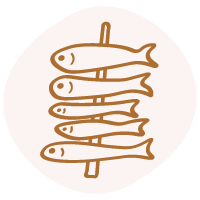

Explore the Triana Market with Taller Andaluz de Cocina
Torre del Oro
Just on the other side of the Puente de San Telmo from Triana, you’ll find the Torre del Oro. Even if you don’t spend much time here, the Tower of Gold is one of Seville’s most iconic landmarks.
The two lower sections of this watchtower were constructed by the Moors in the 13th century, while the upper section was added by the Spanish in the 18th century. Some people say it used to be covered in glossy gold tiles!
Beyond its intriguing history, it houses a naval museum that explores the city’s maritime past – a must-visit for anyone interested in naval history.
Even though it’s not the tallest view spot in Seville (there are others like the Metropol Parasol and the cathedral’s rooftop), it’s still a really nice place to visit.
Real Maestranza de Caballería de Sevilla
After you’ve enjoyed a good lunch, add a splash of excitement to your afternoon with a stop at the Real Maestranza de Caballería de Sevilla. The iconic bullring is a mere 450 meters away from the Torre del Oro.
Interestingly, the bullring has not always been solely about bullfighting. The dungeon of the bullring was once used to lock up criminals.
What’s great about this attraction is that you don’t have to love (or condone) bullfighting to appreciate its historical significance. The Plaza de Toros is one of the best things to see in Seville purely because of its interesting history. This oval-shaped arena, located in the El Arenal harbor district, was built during the 18th century and can hold around 13,000 people.



Guided Tour: Visit the Plaza de Toros and find out about the history of bullfighting
Inside, there are various rooms where you can see paintings, drawings, and more things about bullfighting. The exhibit also displays the clothes, weapons, and tools used in the bullring. You can also take a look at the chapel where the bullfighters prayed before they went into the arena. You can sit in the seats and even walk onto the bullring.
Every year during the Seville Fair, the Real Maestranza becomes the epicenter of one of the world’s most renowned bullfighting festivals. Even if you’re not into bullfighting, you can spend about 2 hours here.
Maria Luisa Park
This peaceful park is right next to the well-loved Plaza de España. It was once part of the nearby Palacio de San Telmo, and you can still see hints of its history. There are statues, fountains, and designs with a Moorish style throughout the Parque de Maria Luisa. On hot days, the park offers lots of shade, making it a nice place for families with kids to enjoy.
Other popular attractions in Seville
If you find yourself with extra time in Seville, here are some other must-see attractions in the city.
- Hospital De Los Venerables: This historic building was once a hospital for elderly priests. Now, it is used as an art gallery, featuring some great paintings by Velázquez, Zurbarán, and Murillo. The cloisters provide a calm oasis in the middle of the Santa Cruz neighborhood.
- General Archive of the Indies: This beautiful old building houses priceless documents from Spain’s maritime history. The displayed documents are just a small portion of what’s kept there and are rotated periodically. Entry is free, and even if you do nothing else, it’s worth a visit to admire the splendid marble stairs and walk through the stunning halls. It’s also a great venue for exhibitions. The Archivo General de Indias is definitely worth visiting if there’s an exposition going on when you’re in Seville.
- Palacio De Las Dueñas: Imagine visiting a real palace! This elegant palace is truly one of the most beautiful places in Seville and one of its hidden gems. Its lush gardens is the undisputed highlight of the palacio – they are much more intimate than those of the Alcazar, while still being just as magnetic.


Get tickets for the Palacio de la Dueñas
- Flamenco Shows And Tapas: Allow the drama and passion of a flamenco show to sweep you away. As you become acquainted with the local flavors while watching this traditional Spanish dance, you’ll be captivated by the resounding claps, soulful singing, and intricate footwork that tell tales of desire, love, and life itself. Paired with some of Seville’s world-famous tapas, it creates the ultimate Andalusian experience.
- Museo Palacio De La Condesa De Lebrija: The house dates from the 16th century and was acquired by the Countess of Lebrija in 1901. It’s a gorgeous Renaissance-Mudéjar building with beautiful Roman mosaics, art and a truly stunning tiled staircase. It’s definitely another hidden gem that’s worth checking out. (It could be a good idea for something to do in Seville on a rare rainy day.)
- Casa De Pilatos: There are a few palaces in Seville that outshine this one. Dating back to the 15th and 16th centuries, many believe that Casa de Pilatos was modeled after Pilate’s house in Jerusalem. You’ll find here a central patio ceramic decorated with stunning arches and mosaics. There is also here an impressive collection of Roman marble statues.
- Iglesia Colegial del Divino Salvador: The sheer opulence of this place is exceptional even by the standards of Spanish historic churches. It ranks among the best churches to see in Seville besides the Cathedral.
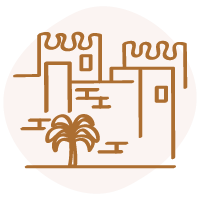


Get Tickets for the Casa De Pilatos
How to Get to Seville
You can get to Seville by plane, train, or bus, depending on where you’re traveling from.
Flighting in
Sevilla-San Pablo Airport (SVQ) handles both local and international flights.
- If you take a taxi from the airport to the city center, the ride lasts around 20 minutes and the fare is approximately €25.
- If you prefer, you can catch buses at the airport that go to the city center every 20 minutes. A single ticket for the ride costs €4.
From Madrid
Traveling south from Madrid? Easy – simply hop on the high-speed train.
If you’re at Barajas International Airport (MAD) in Madrid, you can get to the Atocha Train Station by bus or taxi. The trip takes around 2.5 hours, and there are lots of departures. (Pssst! I have not visited Madrid, but I know someone who did!)
From Málaga
Flying into Malaga? No problem, just follow the same plan. Head over to the Málaga María Zambrano Train Station and hop on a high-speed train to Seville. The trip takes around 2 hours.
Driving to Seville
Here’s a complete guide to driving in Andalusia.
Getting Around Seville
Getting around Seville s quite simple, whether you choose to walk or use the city’s reliable public transport.
If you think you’ll be using public transport often, consider getting a travel pass (abono turístico) that includes the subway, bus, and train. The 1-day card costs € 5 and the 3-day card costs € 10.
It’s also possible to use SEVici, the public bike rental service in Seville, to rent bicycles.
Where to Stay in Seville
Long story short: the Barrio Santa Cruz.
If you want the whole story, I wrote a complete article about the best neighborhoods in Seville, depending on who you’re traveling with and the kind of traveler you are.
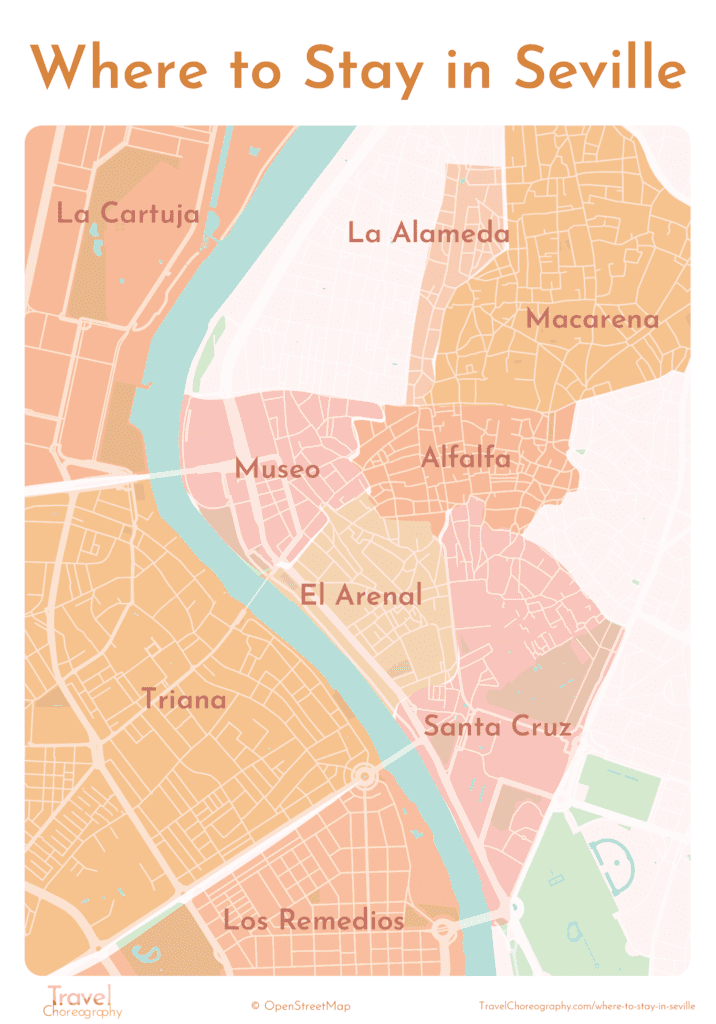

Day Trips from Seville
Here are some day trips ideas:
- Day trip to Cordoba
- Day trip to Granada to see the Alhambra
- Day trip to Malaga and see the Alcazaba
Organized tours from Seville:
Best Time to Visit Seville
Without a doubt, it’s during the springtime. During that period, many flowers come to life, and notably, it’s the season of orange blossoms. This season brings a new atmosphere to the city and this is the ideal time to plan your visit.
If you can’t visit from April to June, then September and October are also good months to come to Seville. It is, in fact, one of the top autumn destinations in Europe.
Map of Places to Visit in 2 or 3 Days in Seville
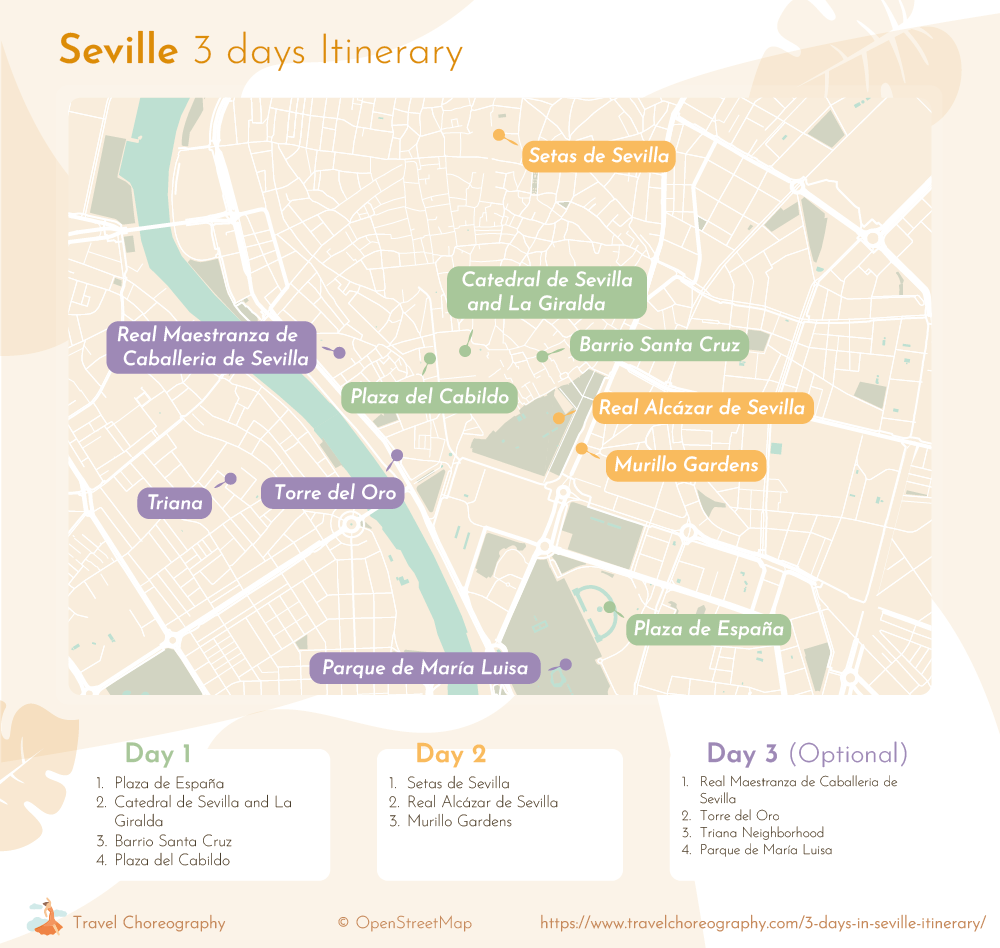

Read more
Where to Stay · Where to Stay in Seville · Seville vs Granada · Historic Hotels in Andalusia
Seville Travel Guide · Best Tours · Rooftop Tour of Seville Cathedral · Orange Blossoms in Seville · Inside the Real Alcazar · Jewish Quarter
Itineraries · 7 Days in Andalusia (Start from Seville)
Parking in Seville · Parking in Seville (In Under 15 Minutes)
Day Trips · Córdoba · Tangier · Jerez · Cádiz · Granada

